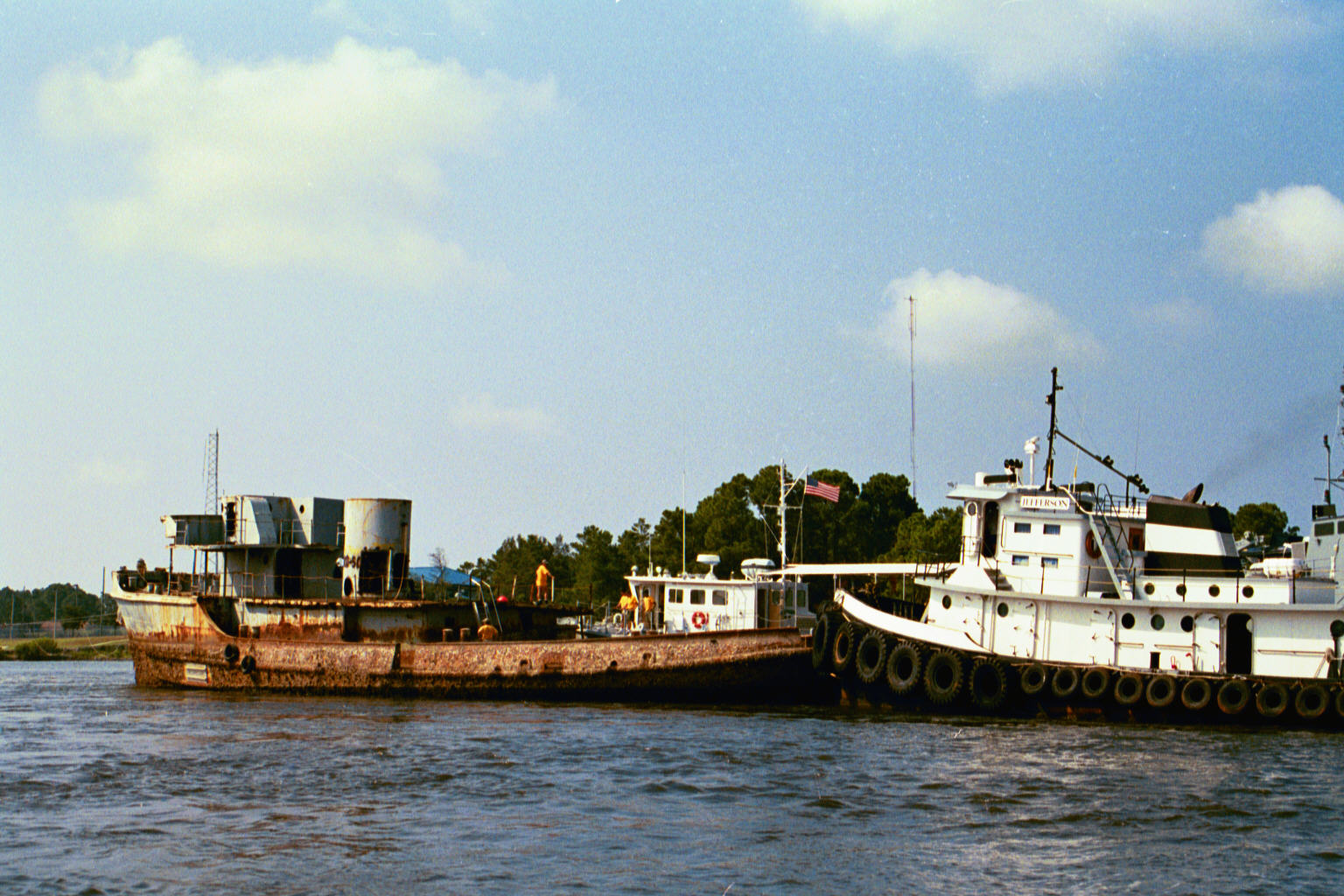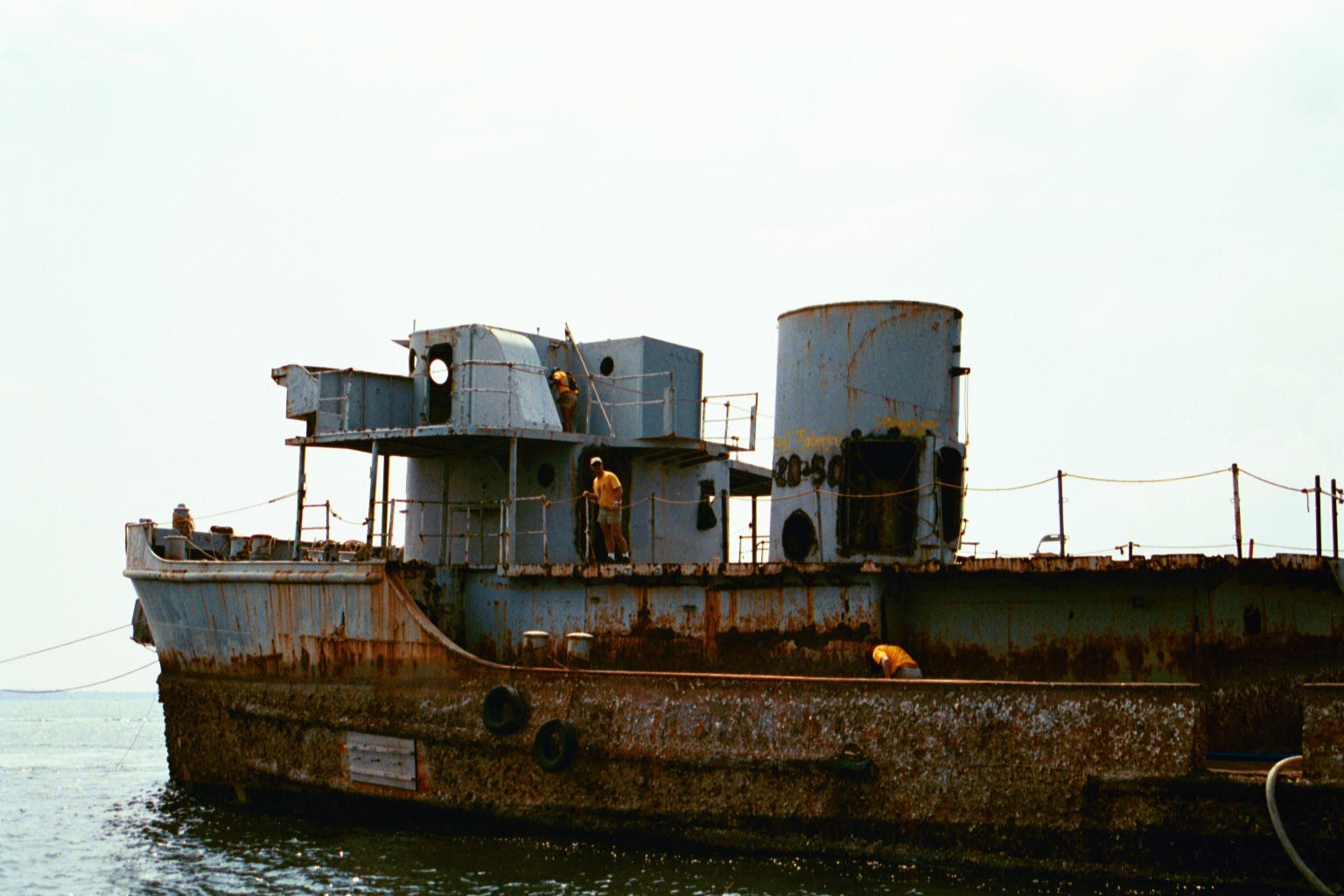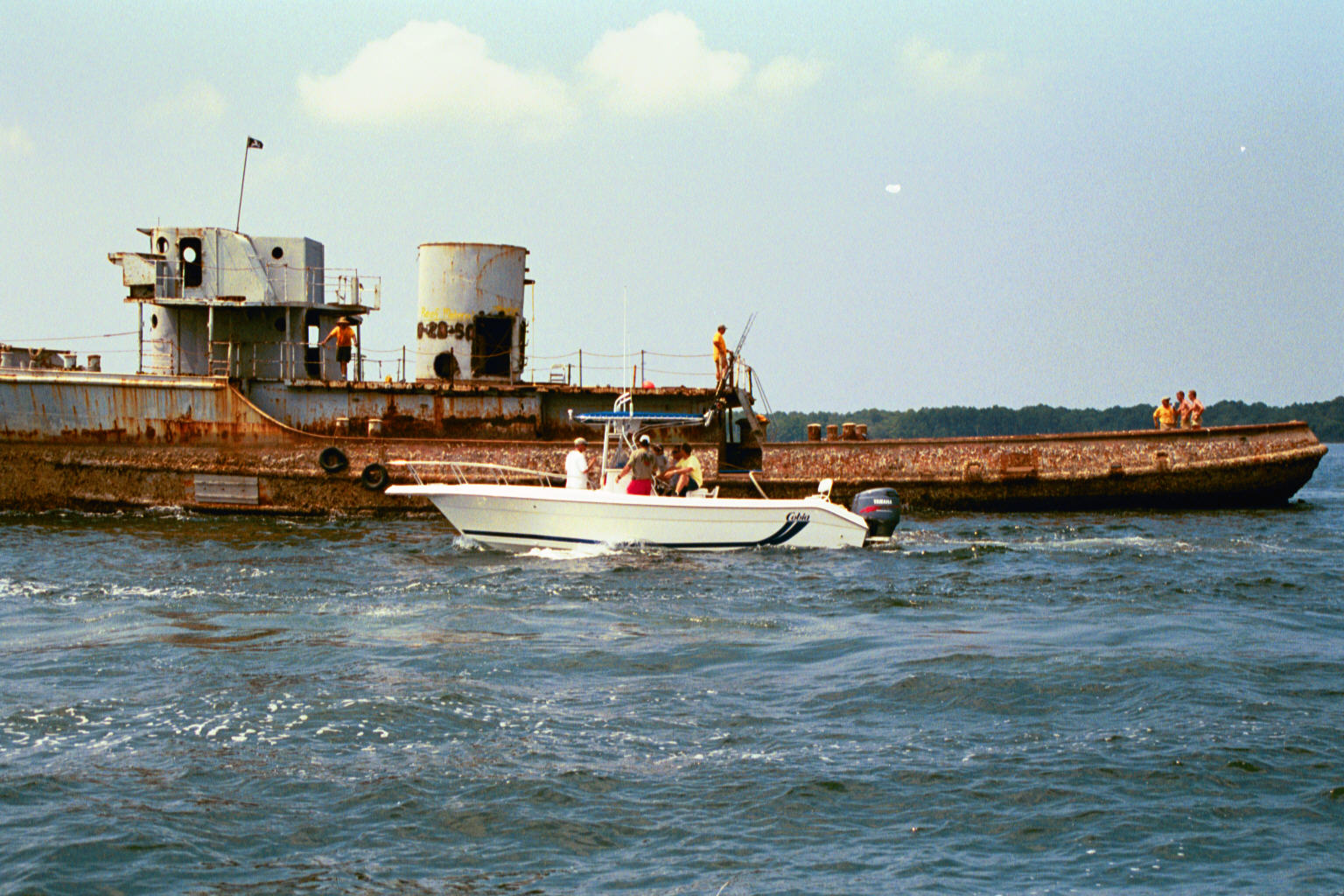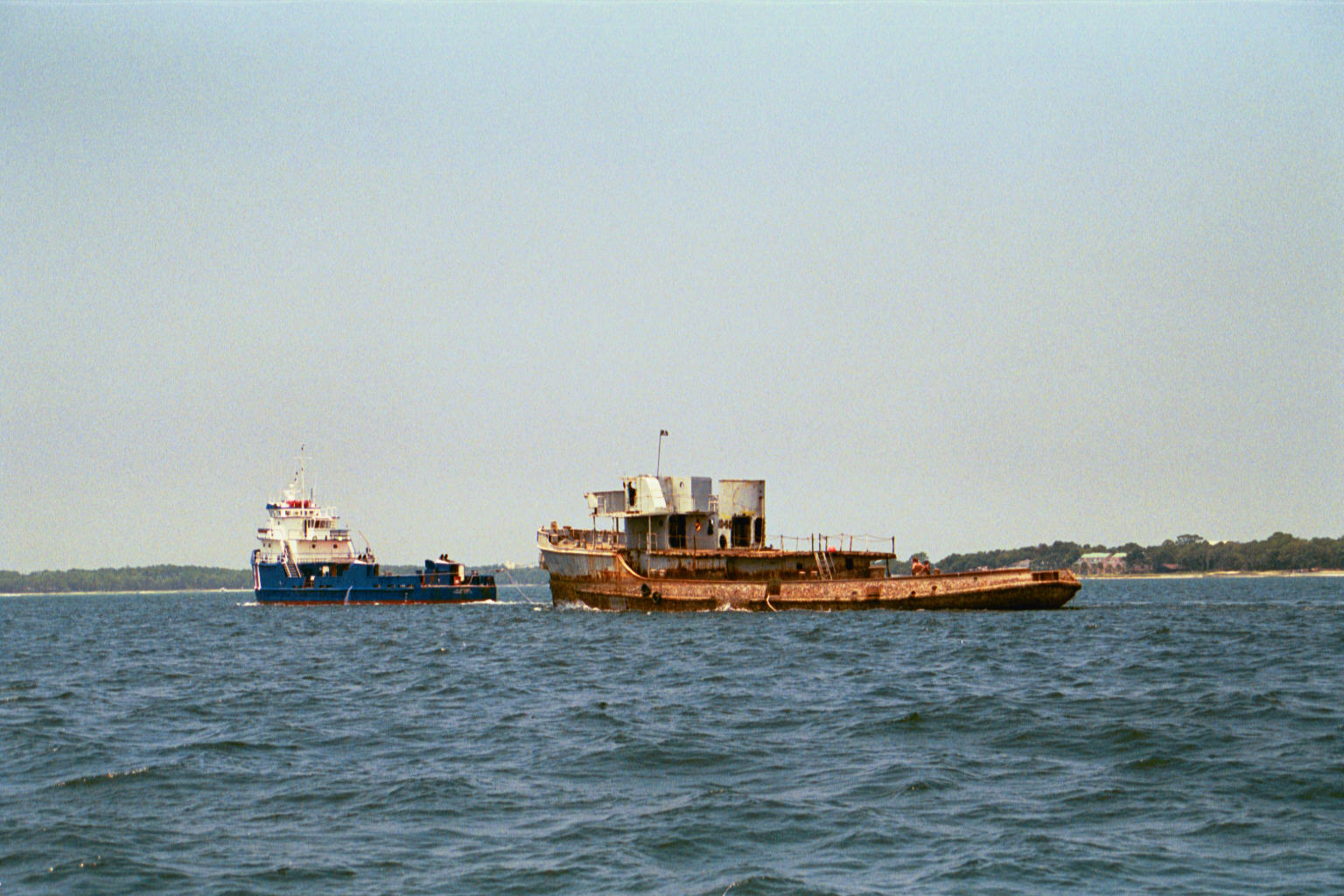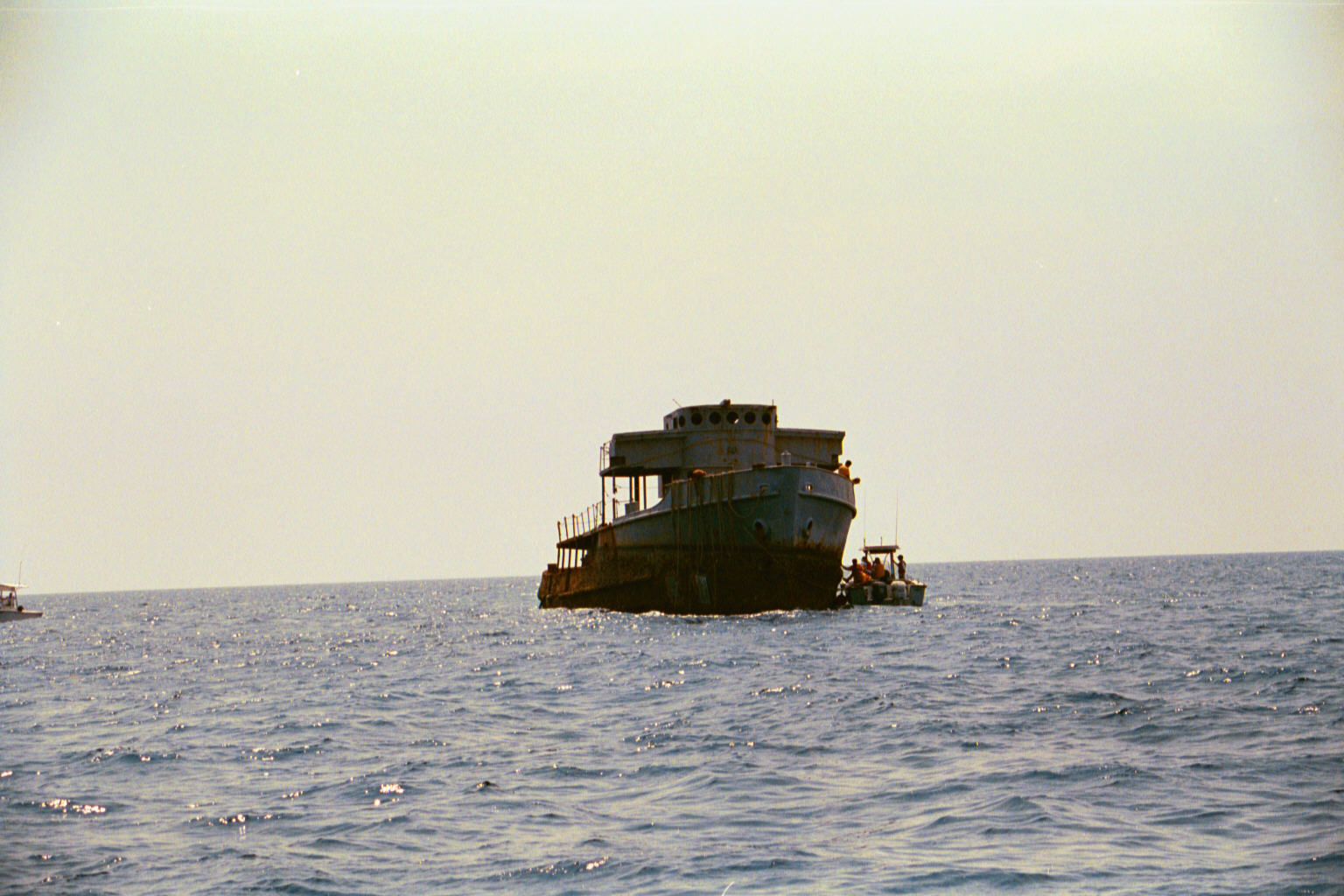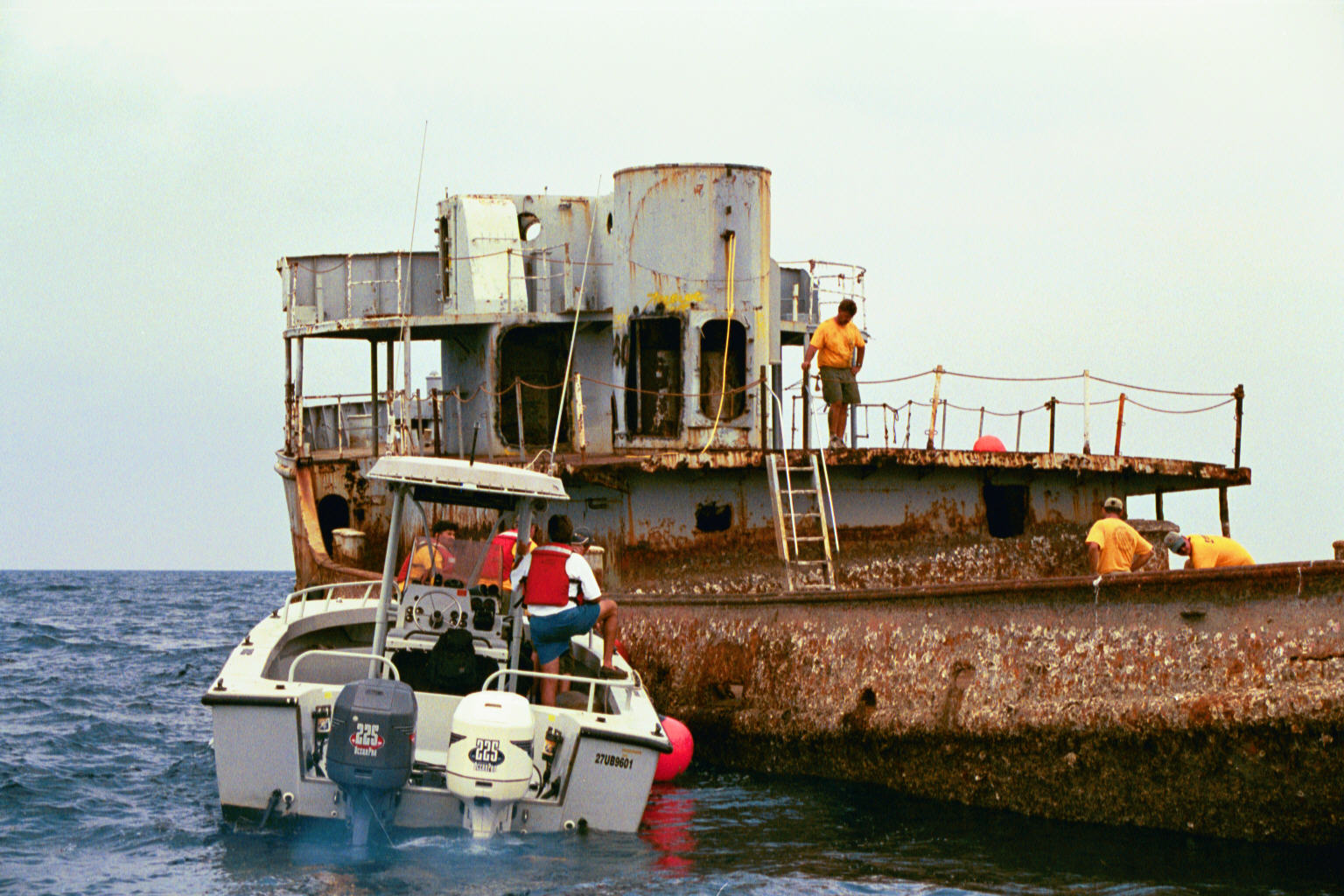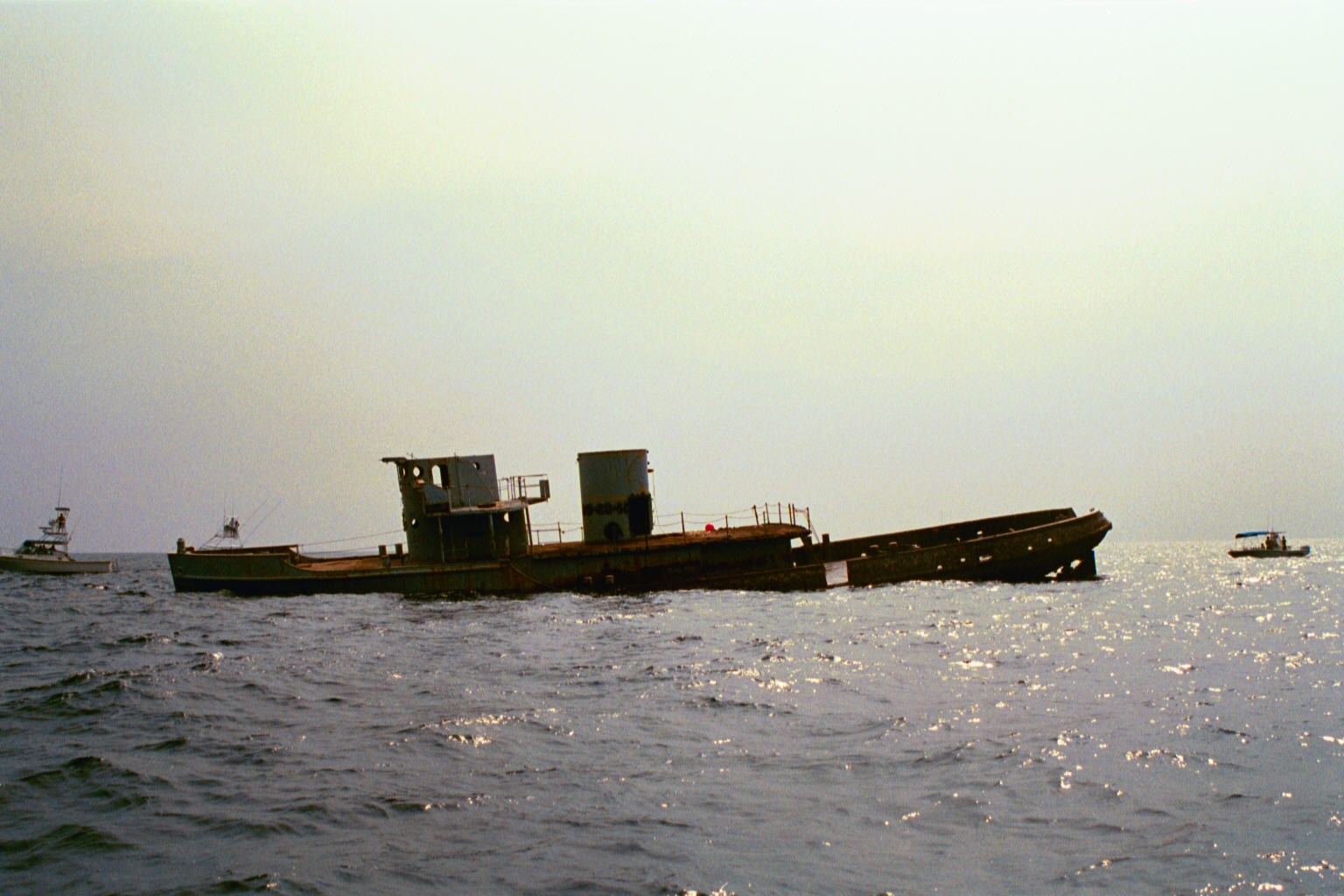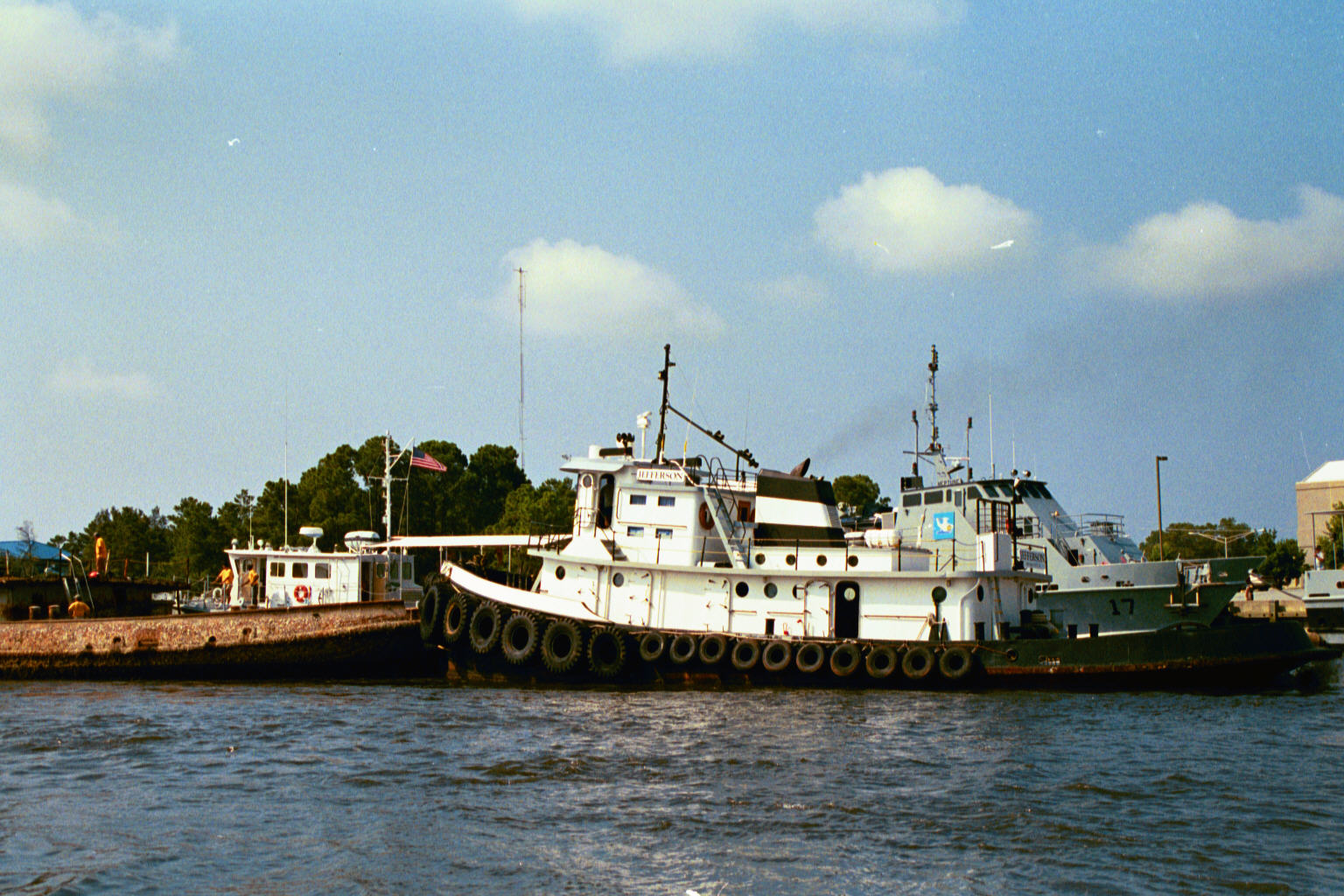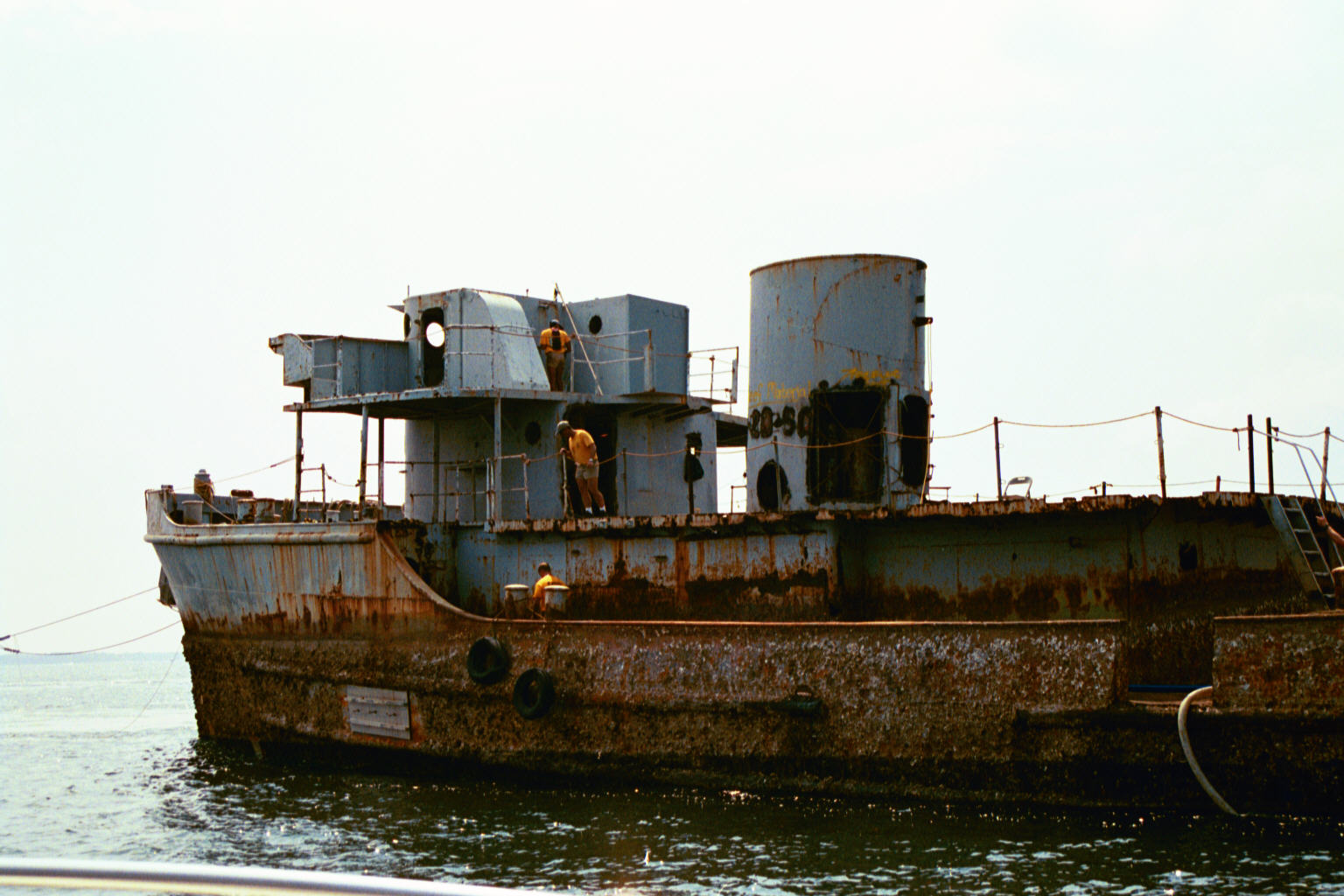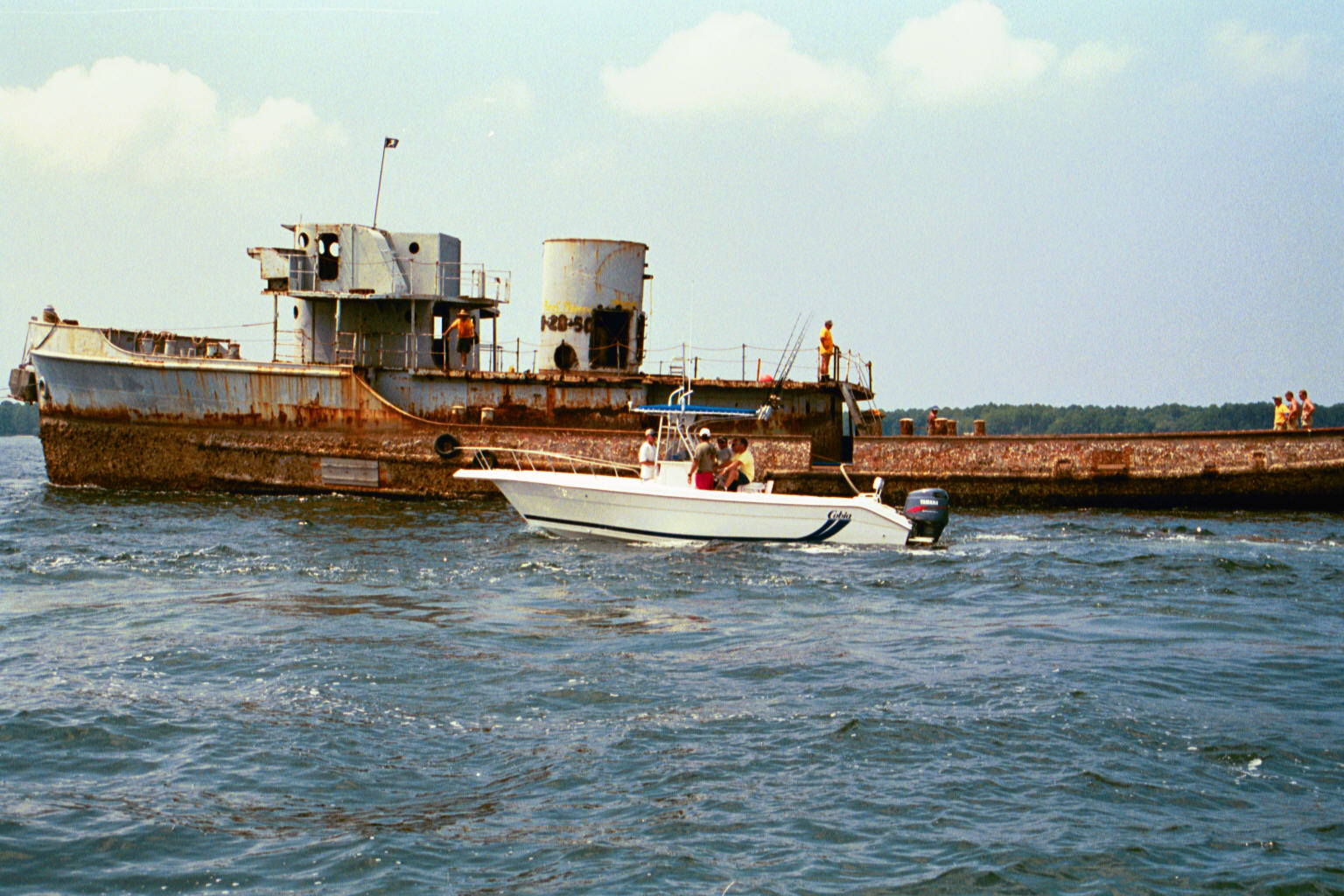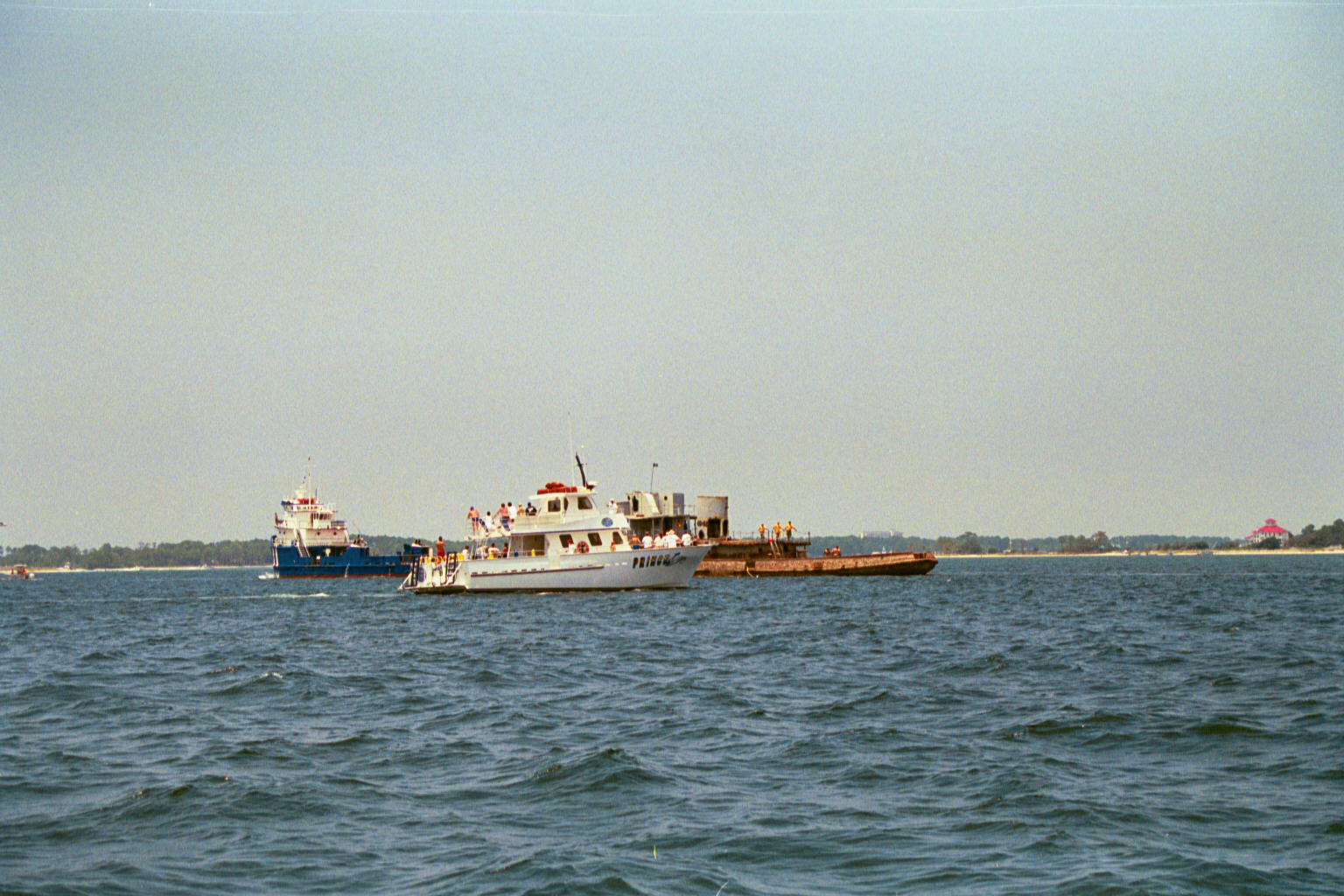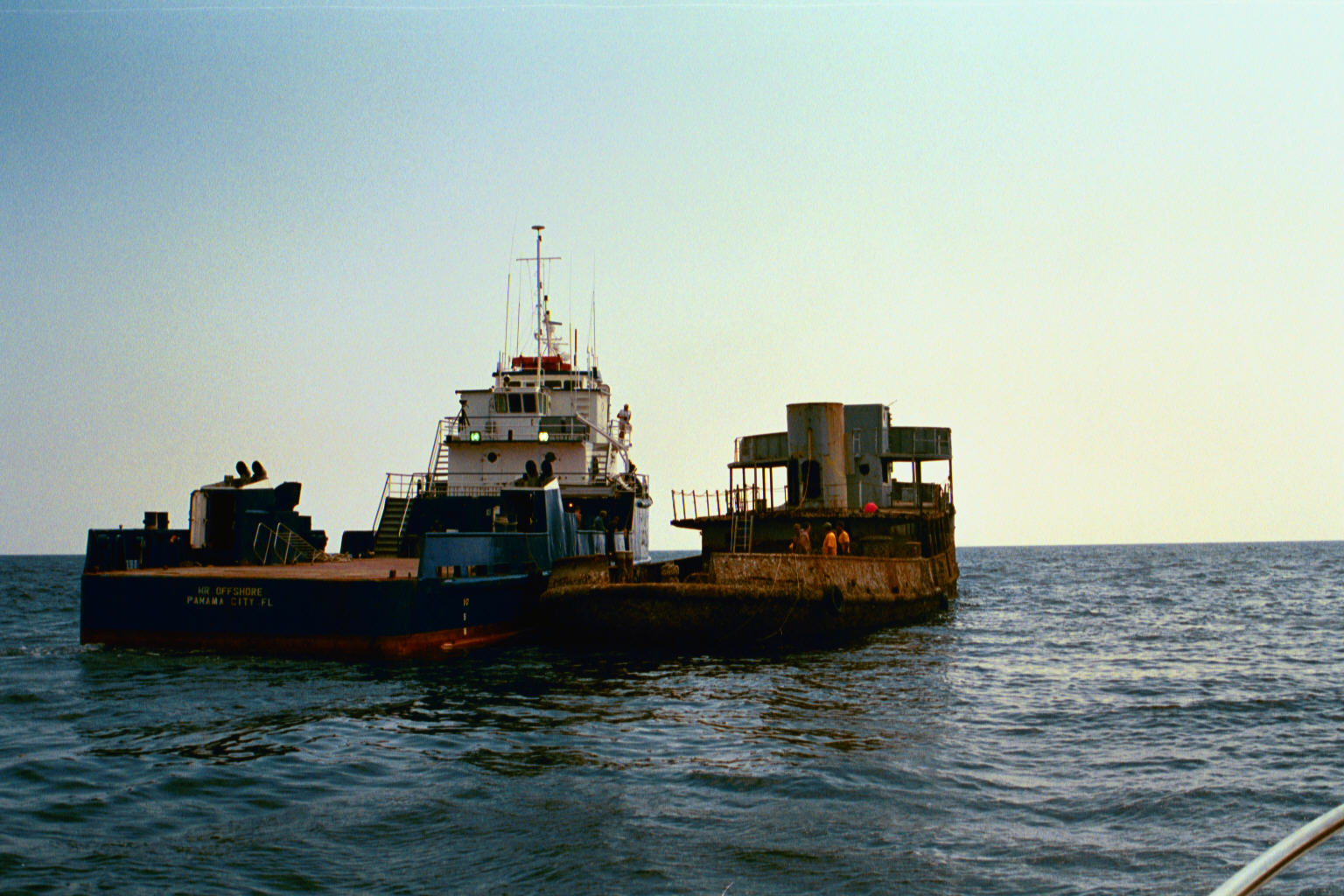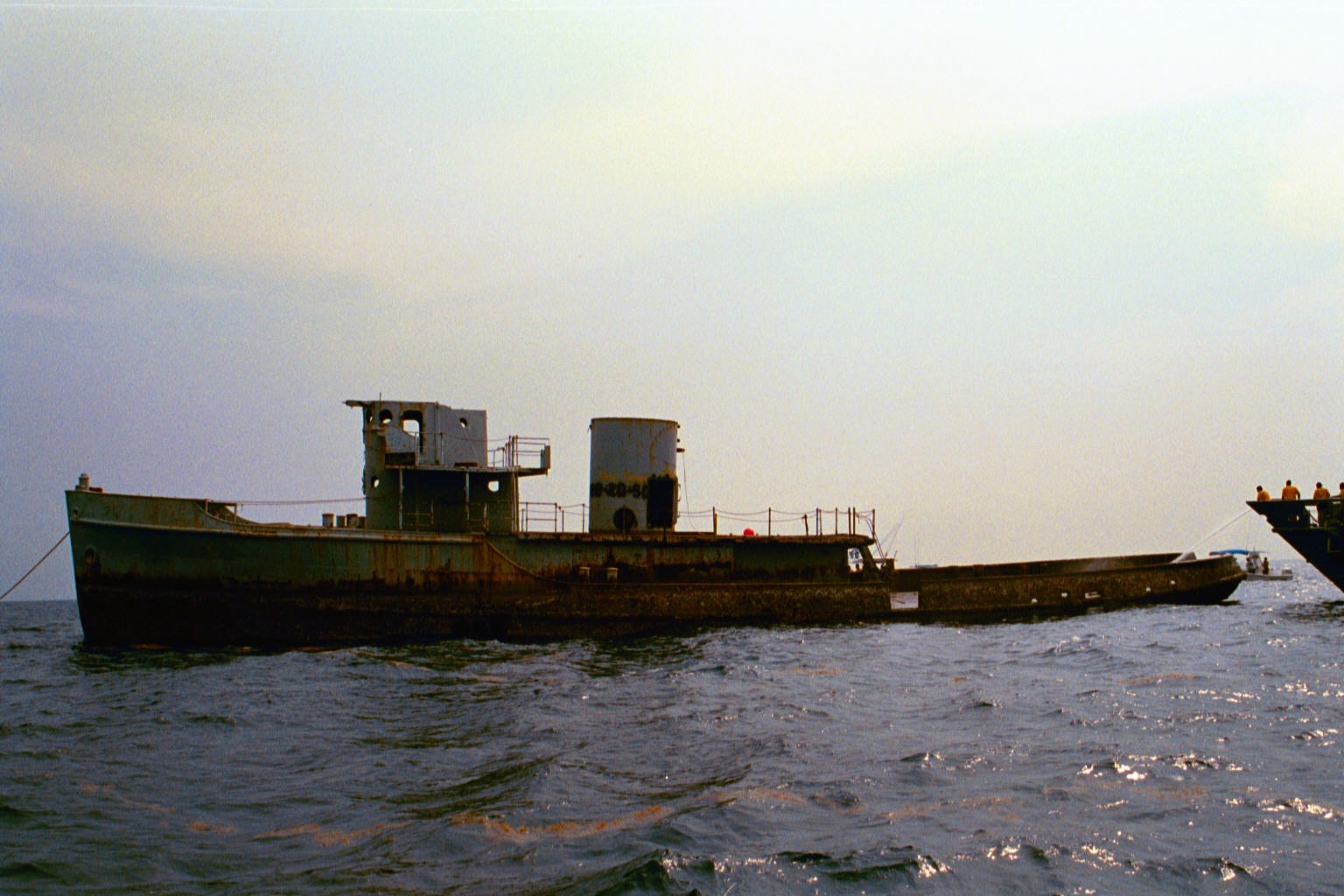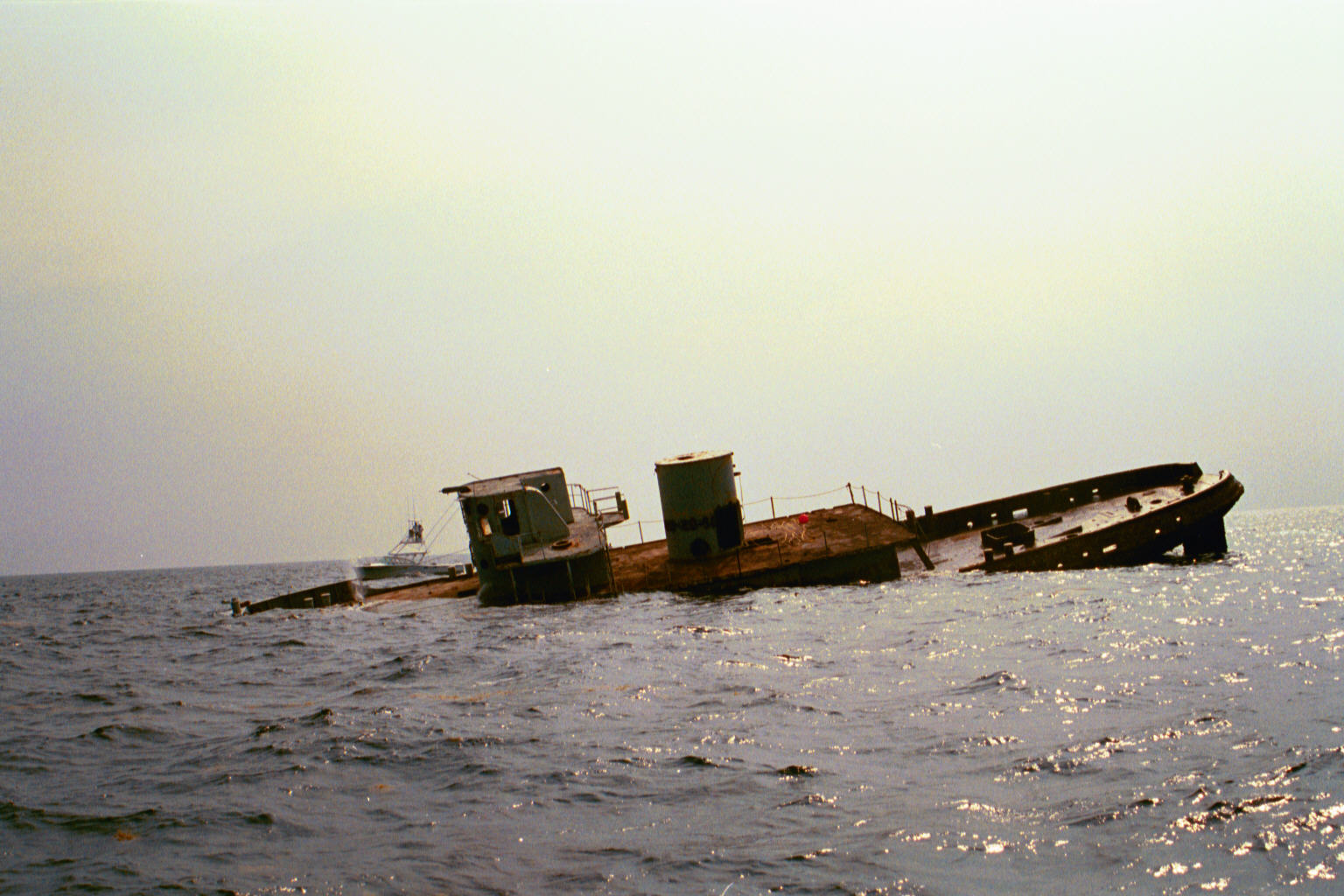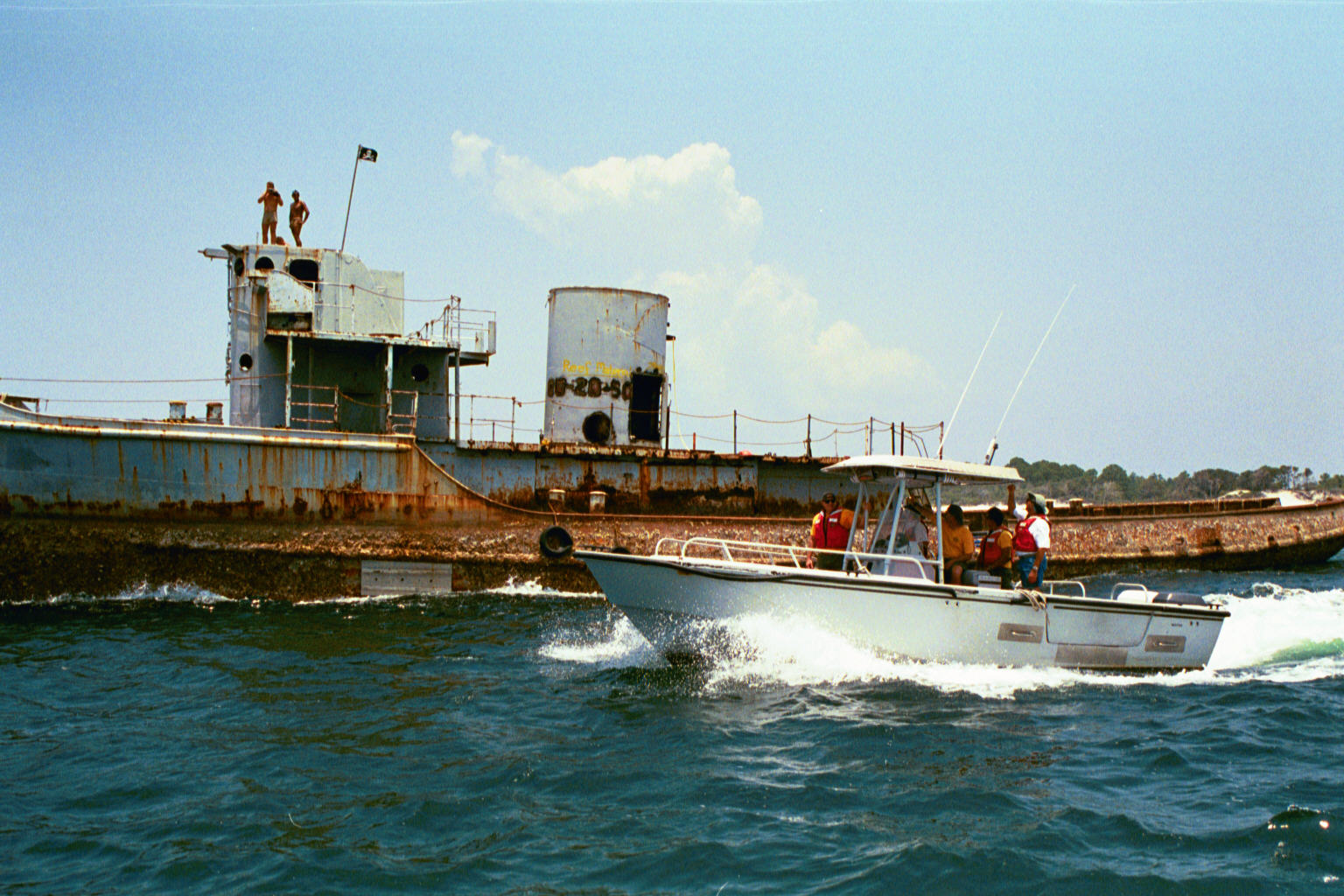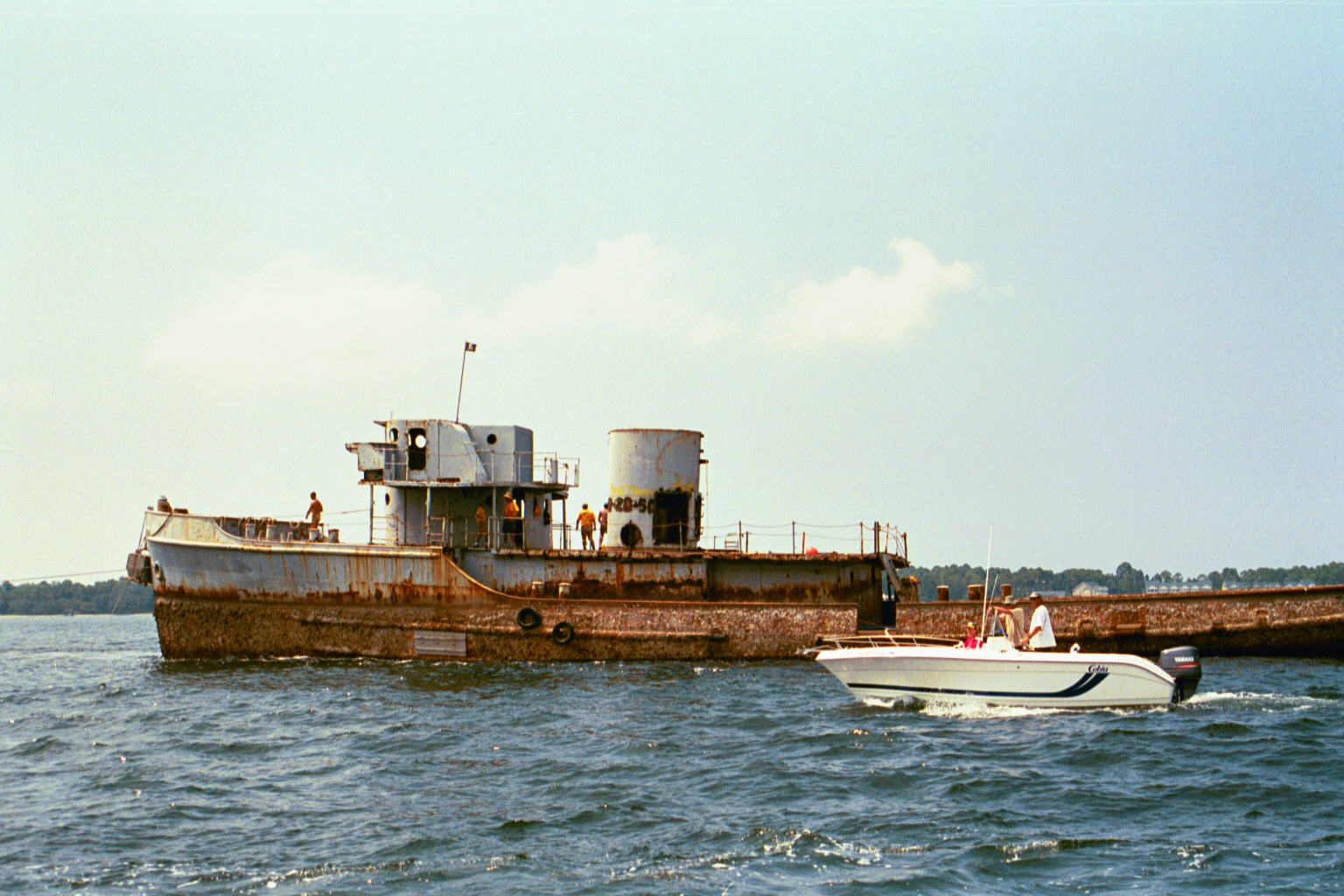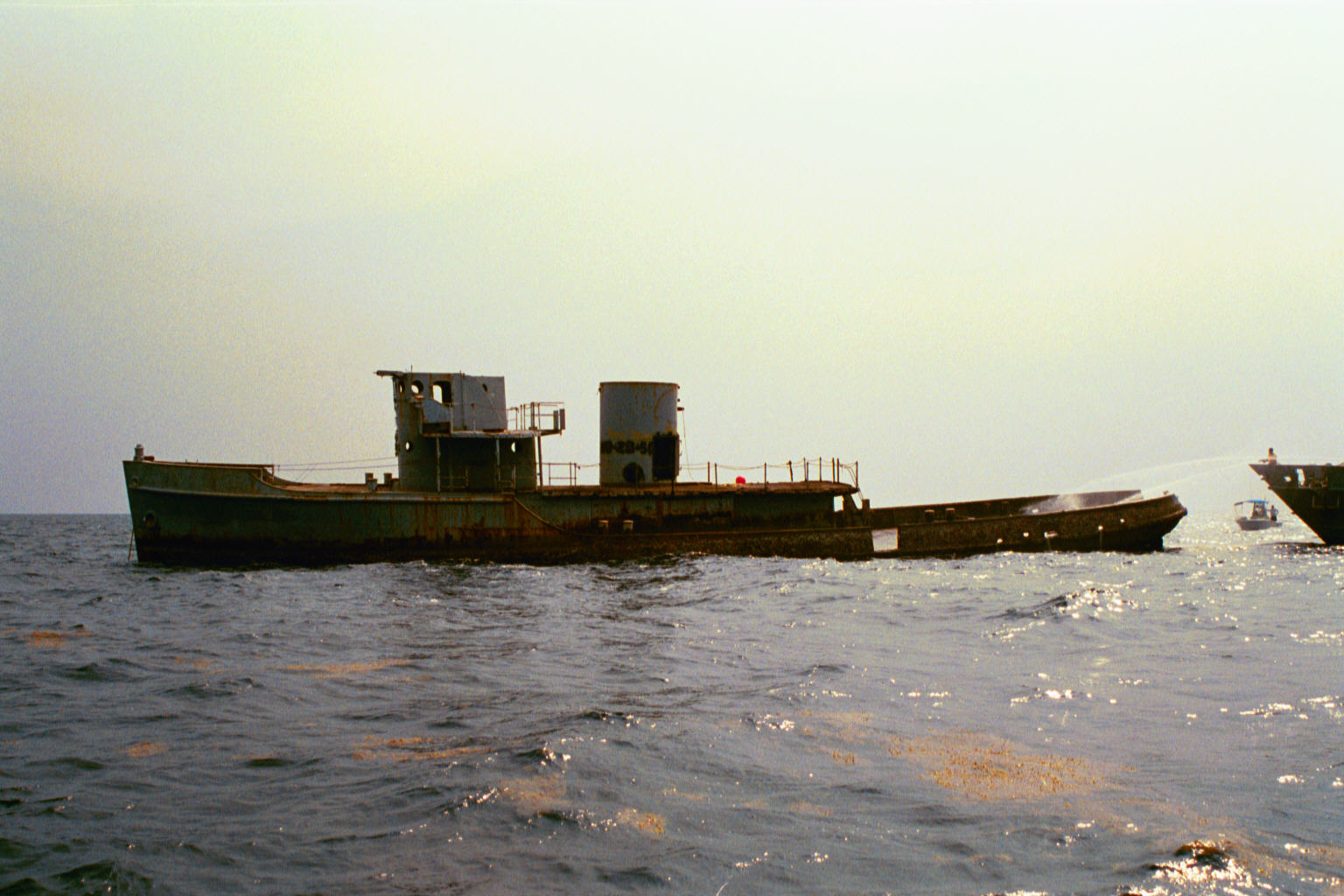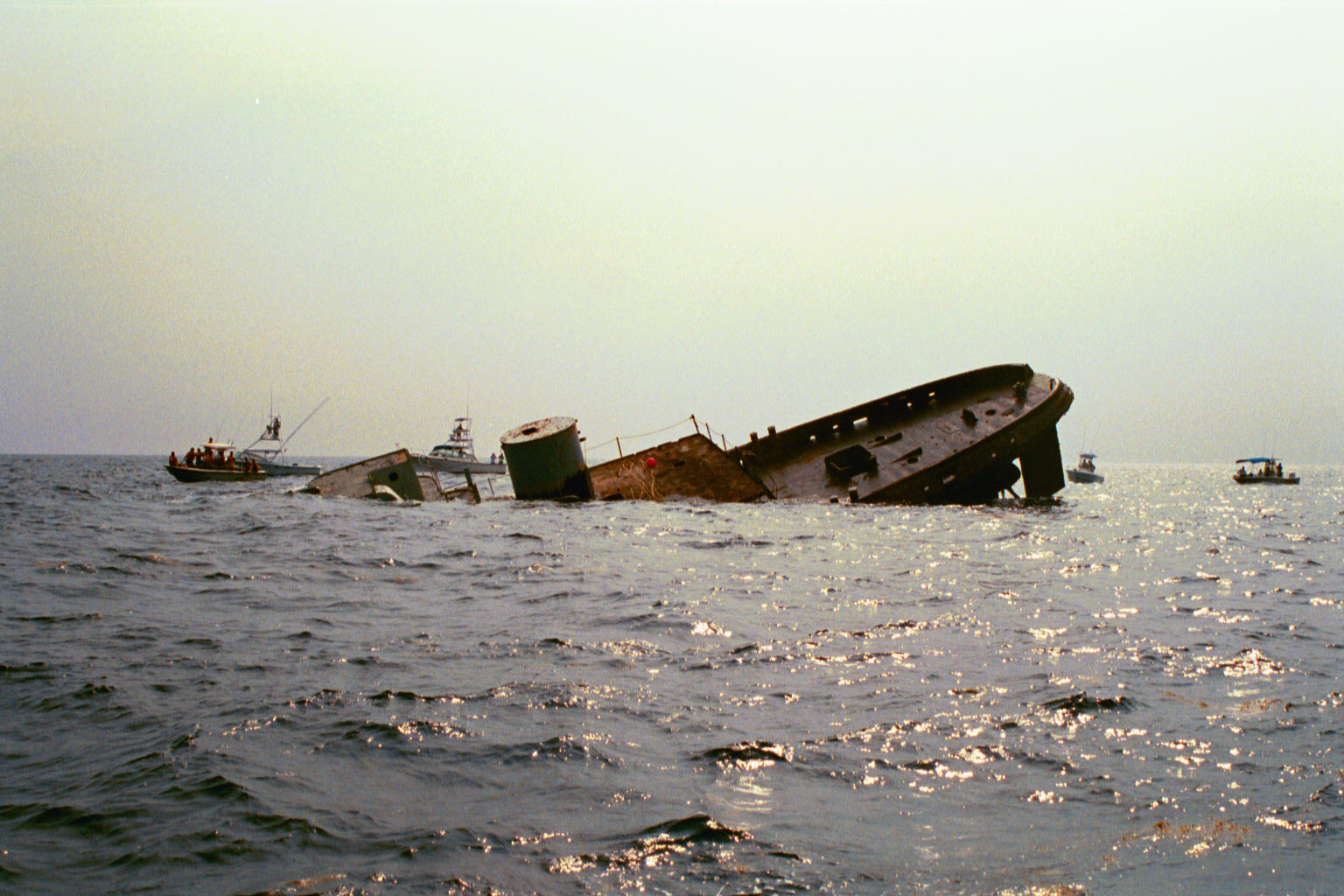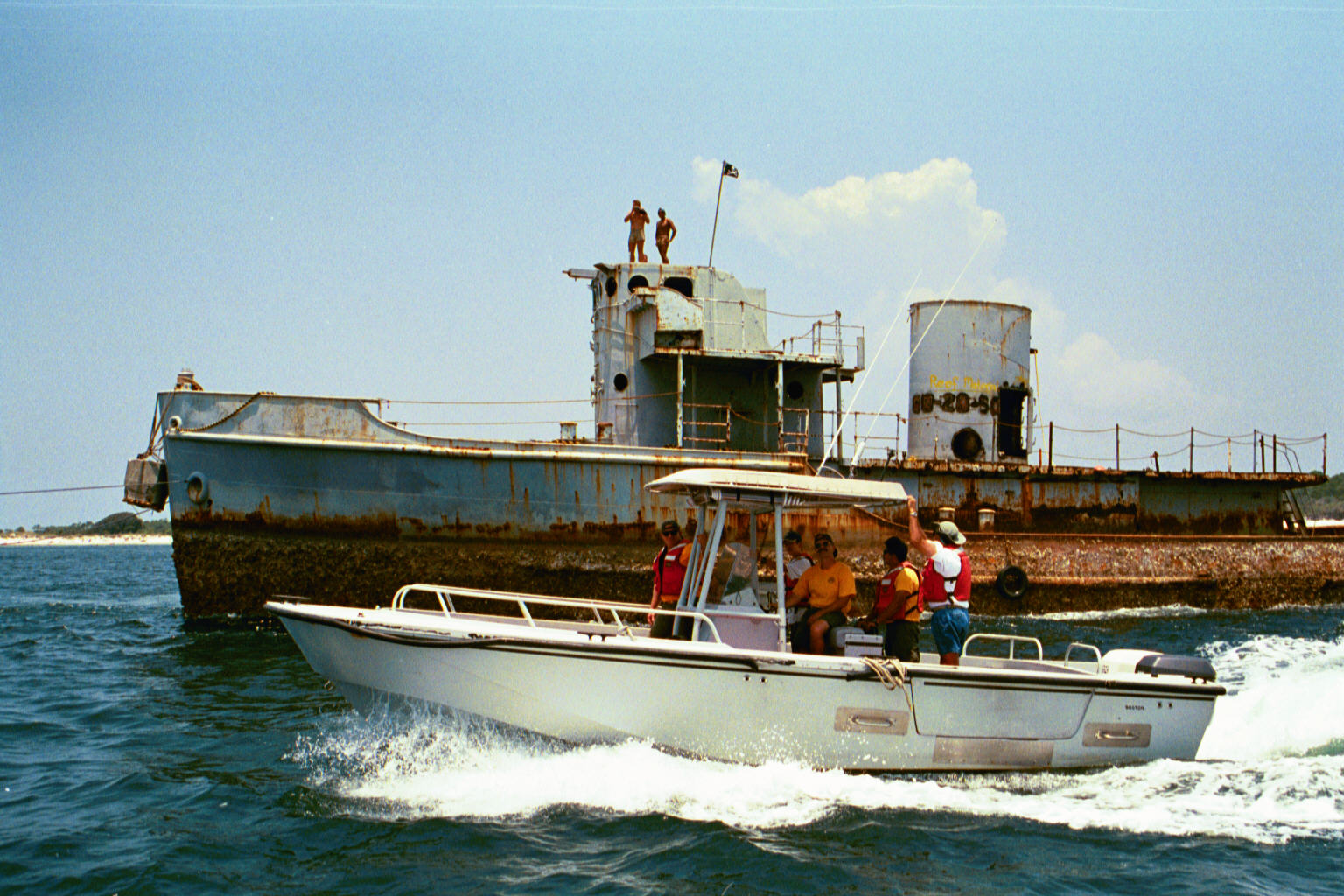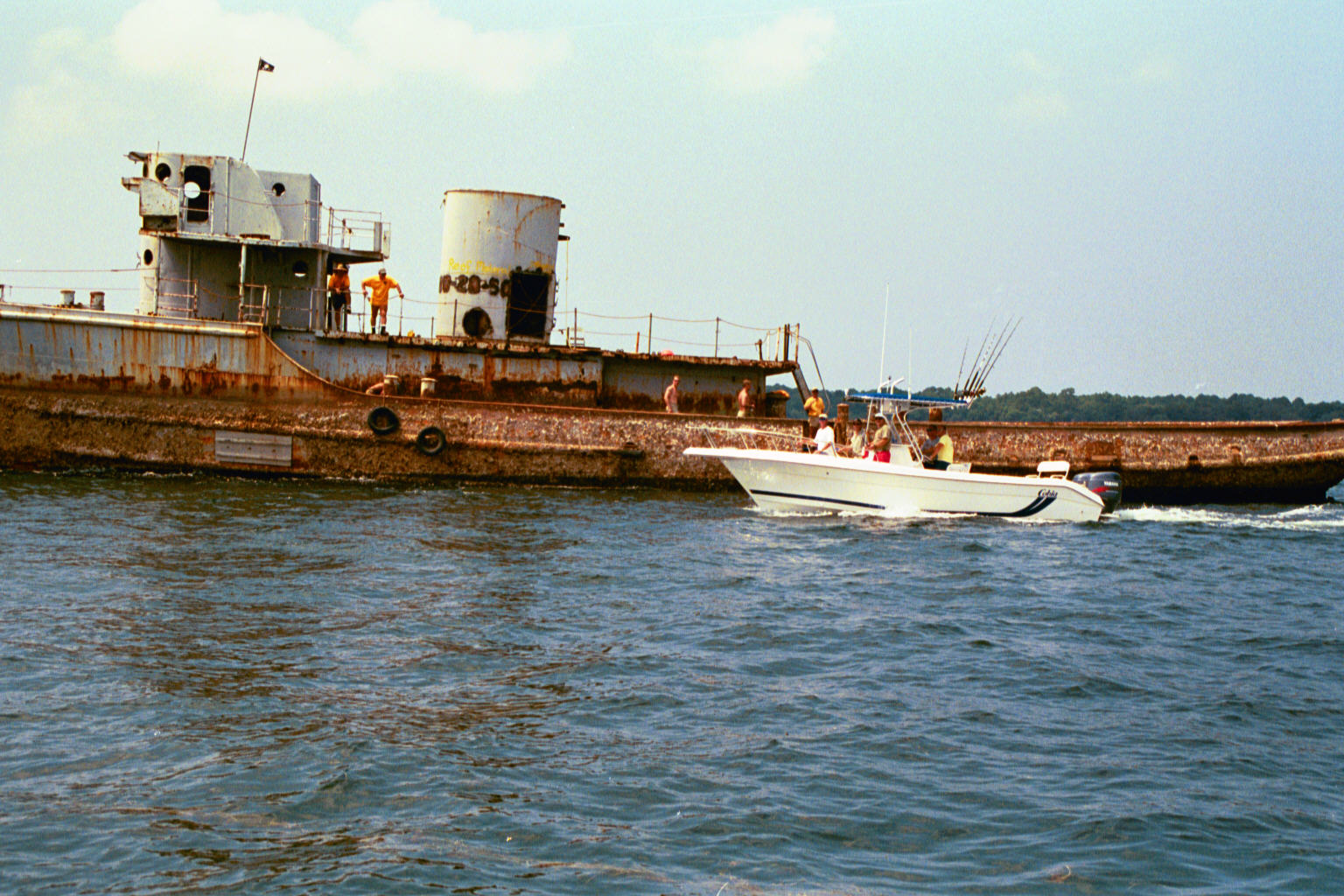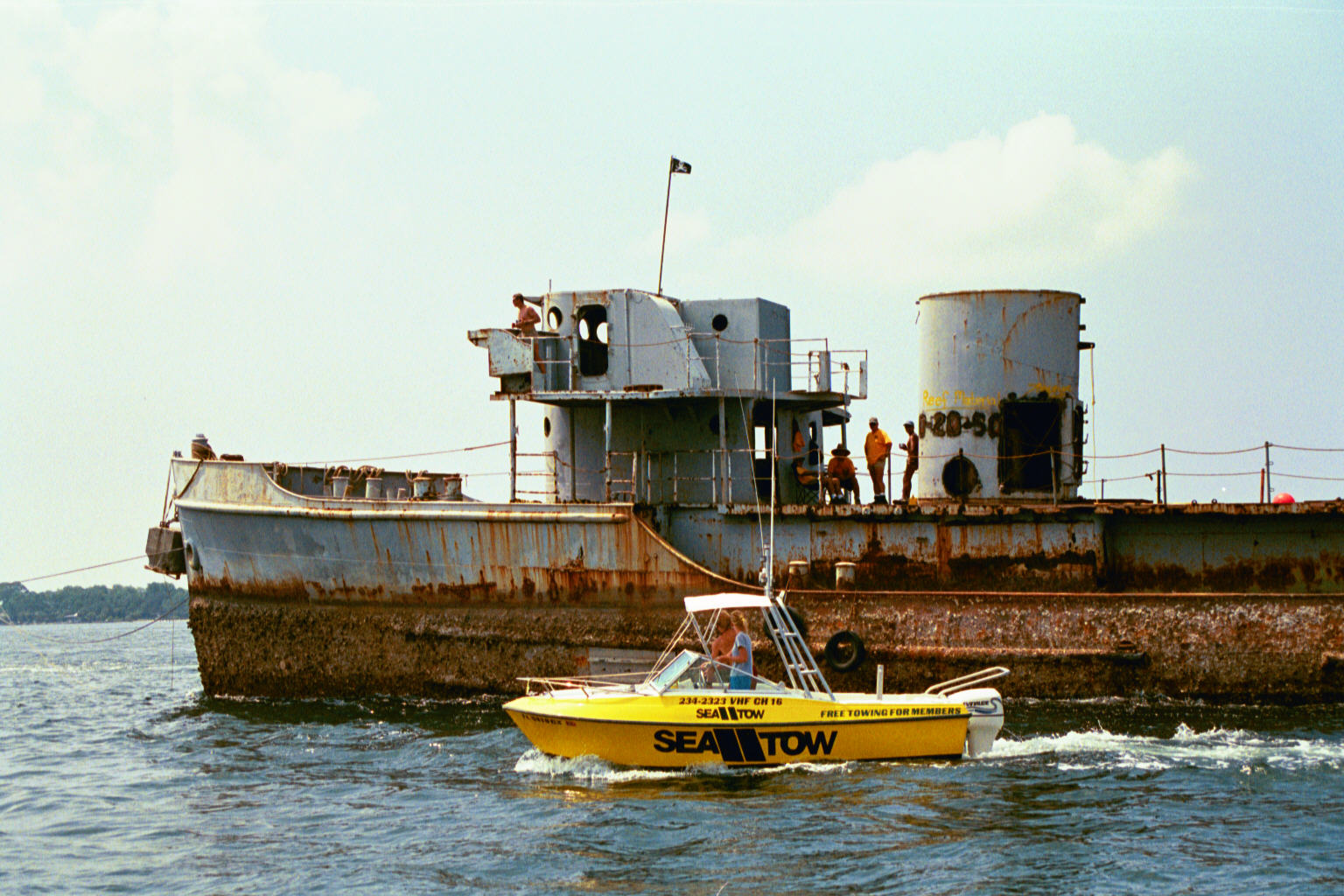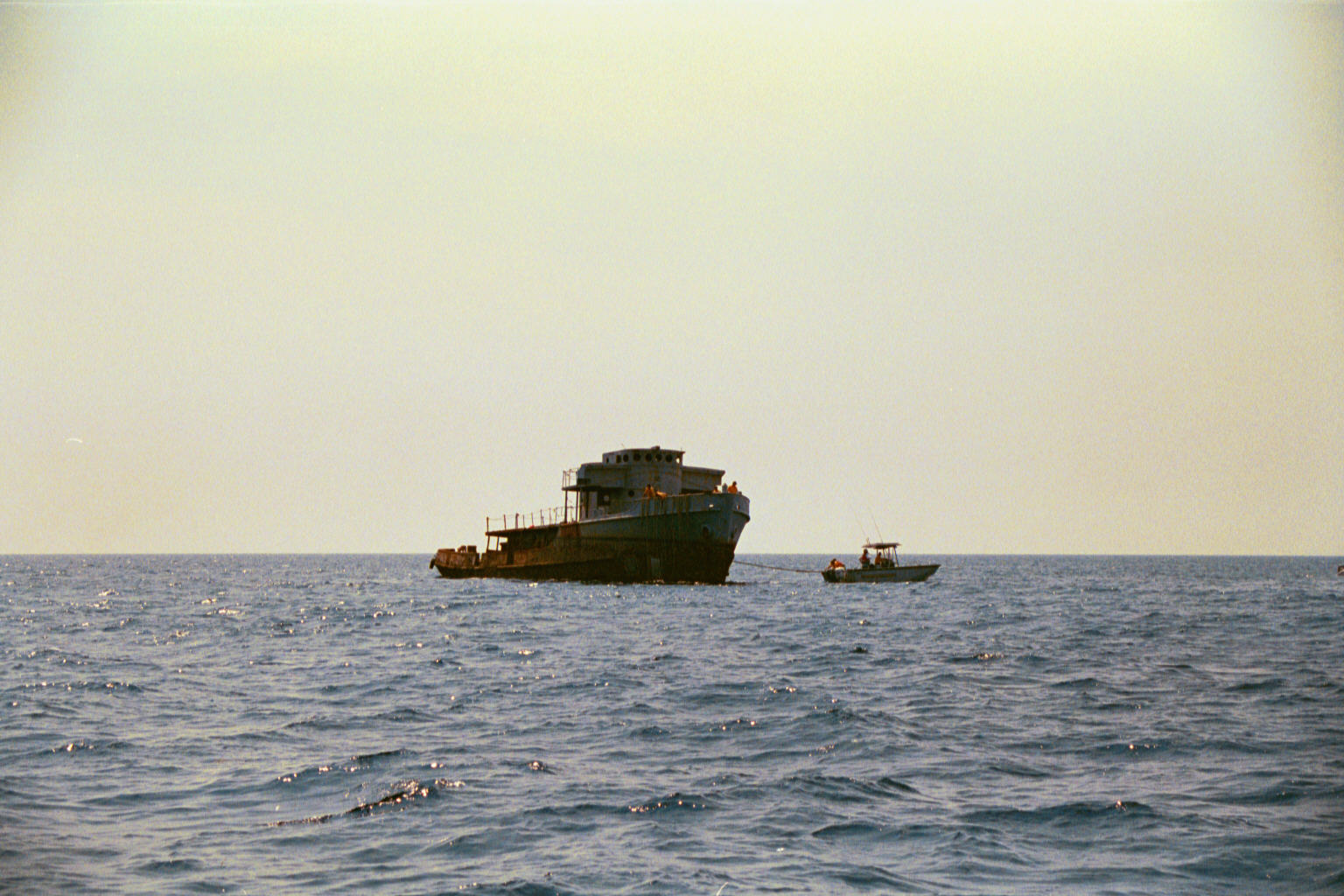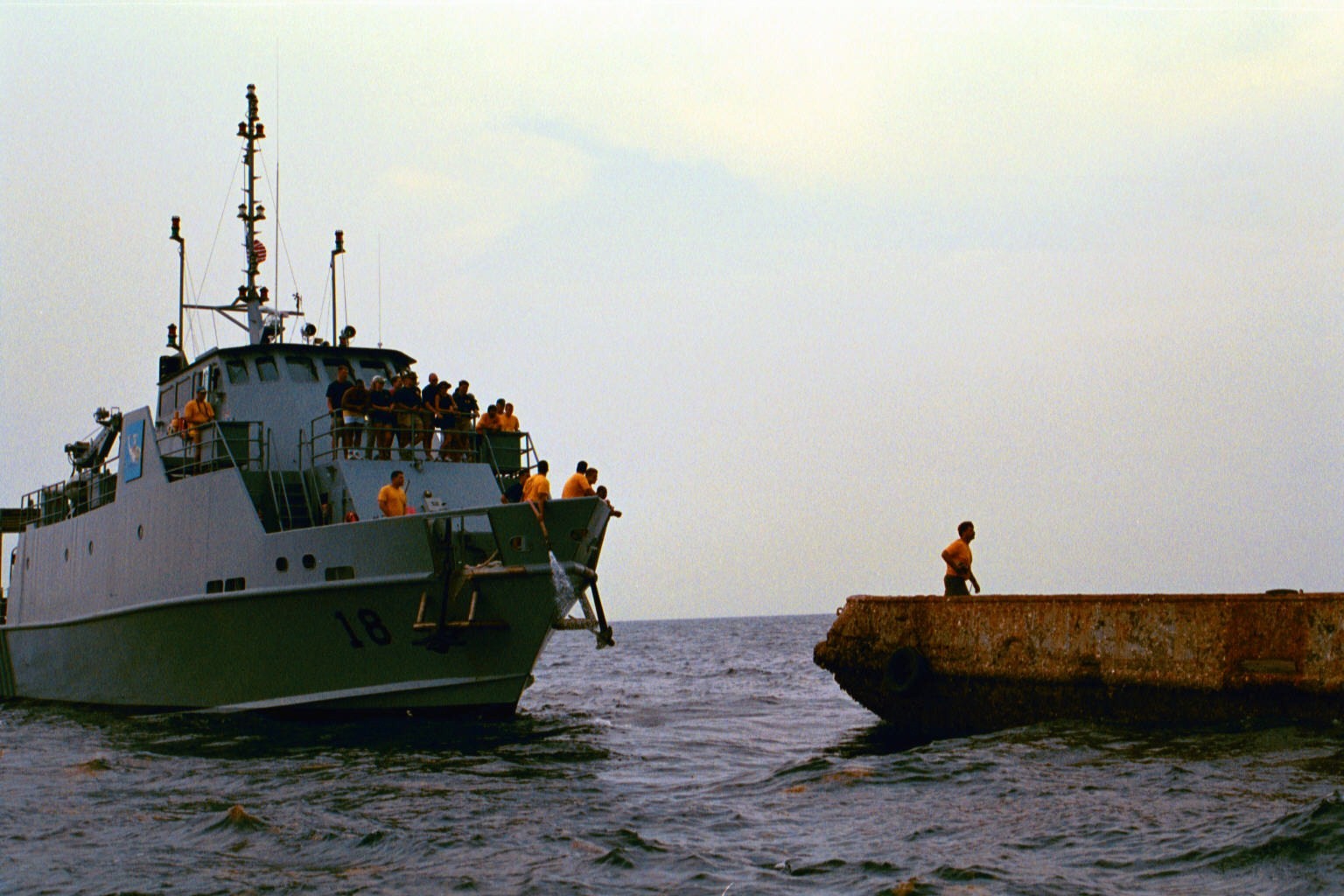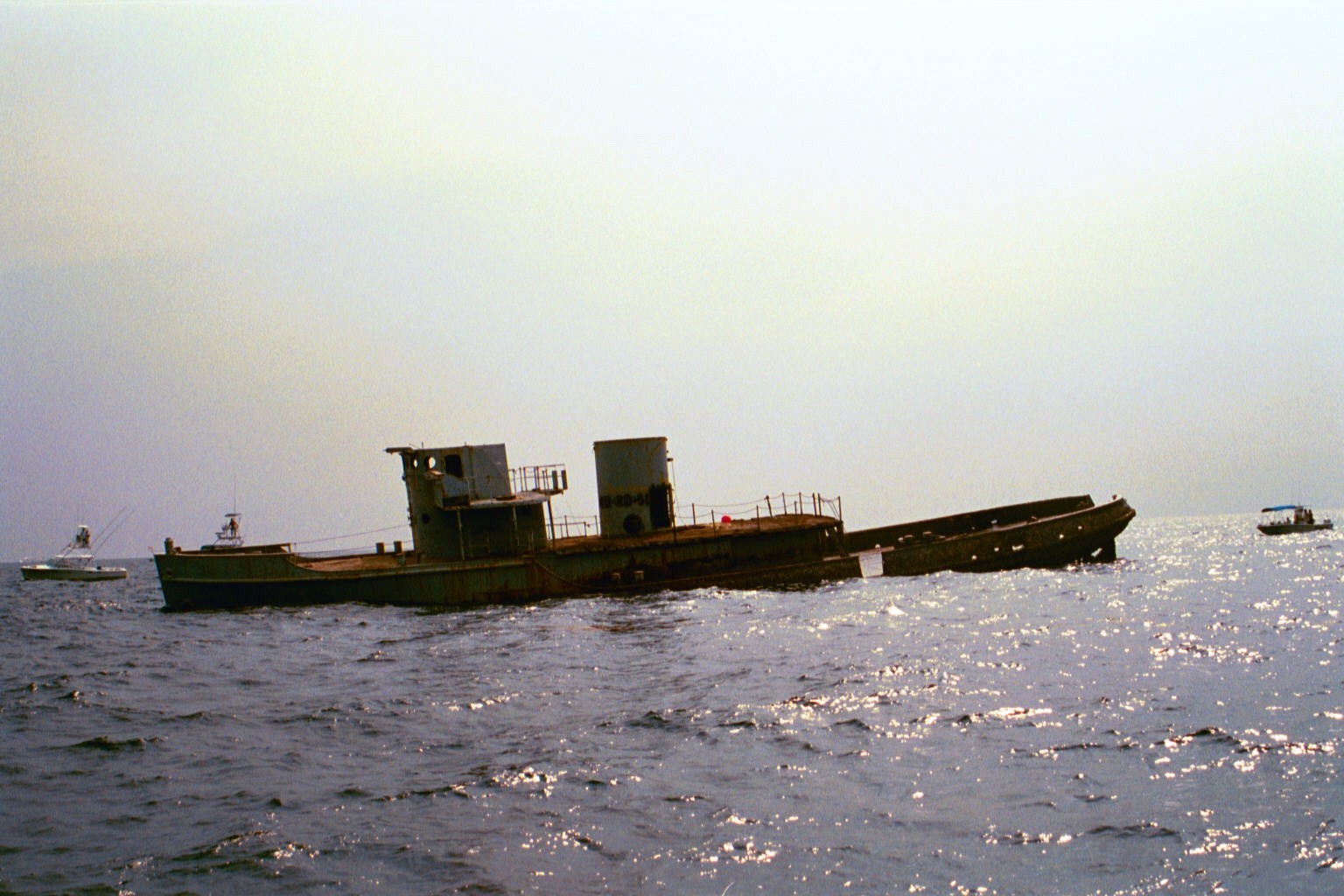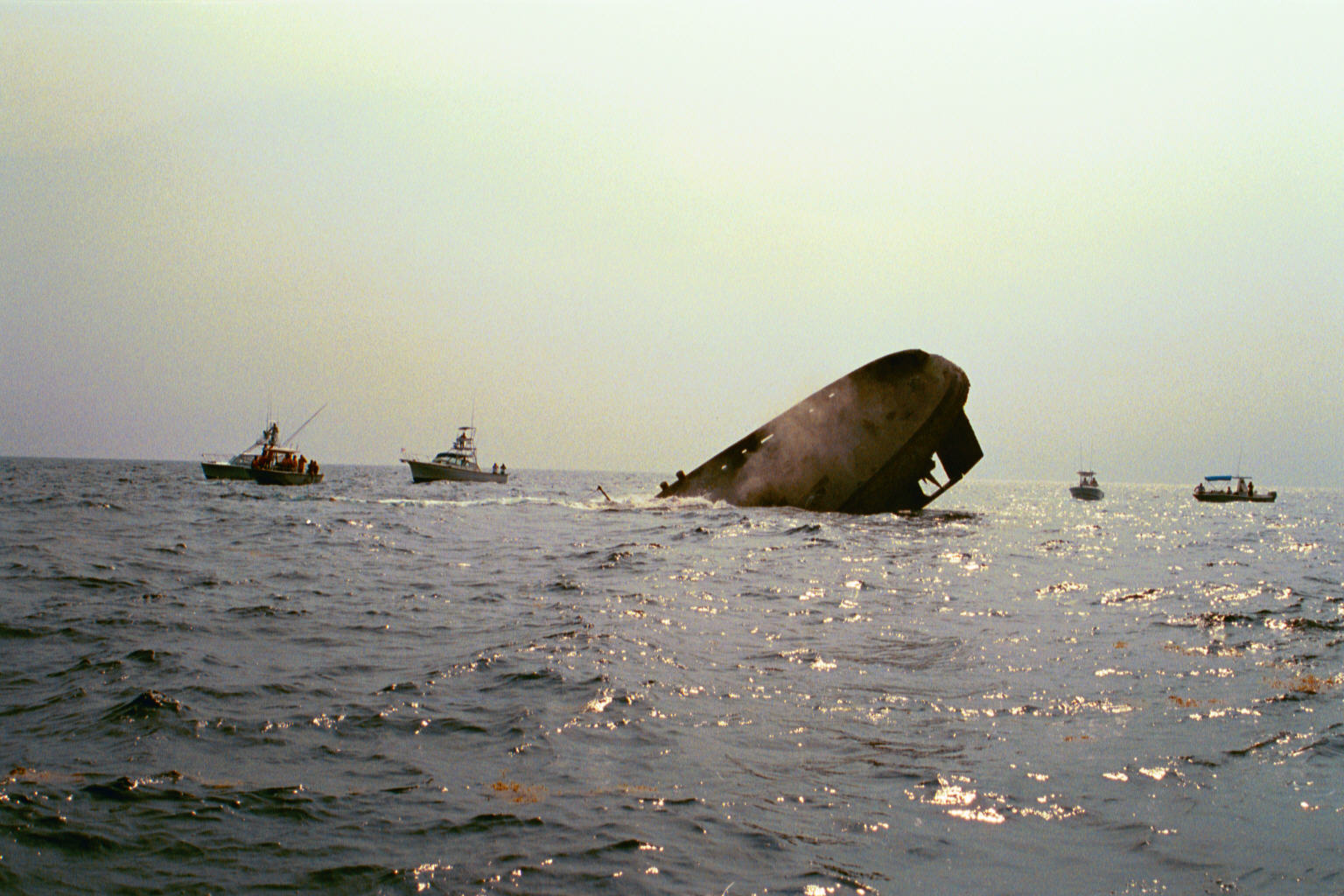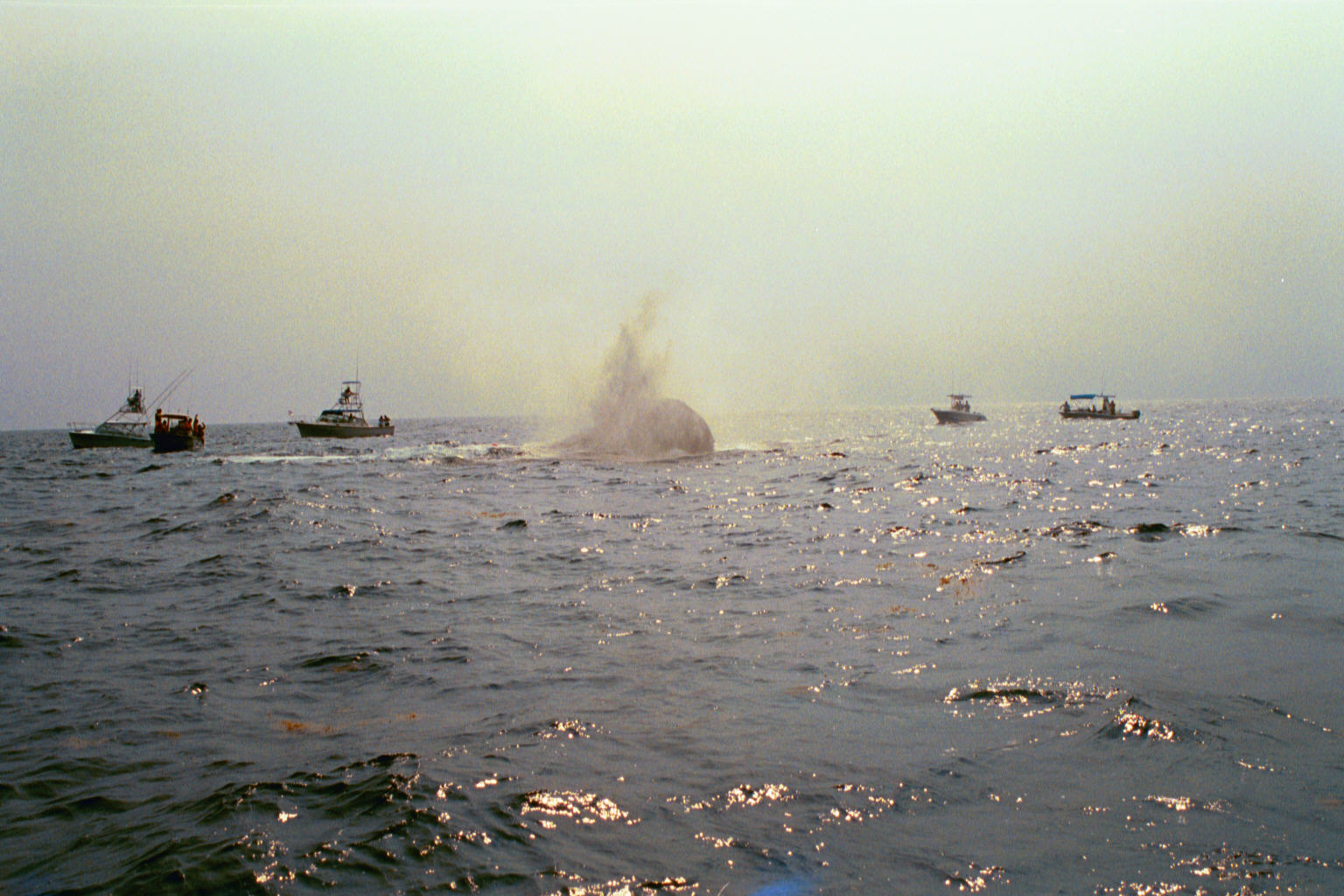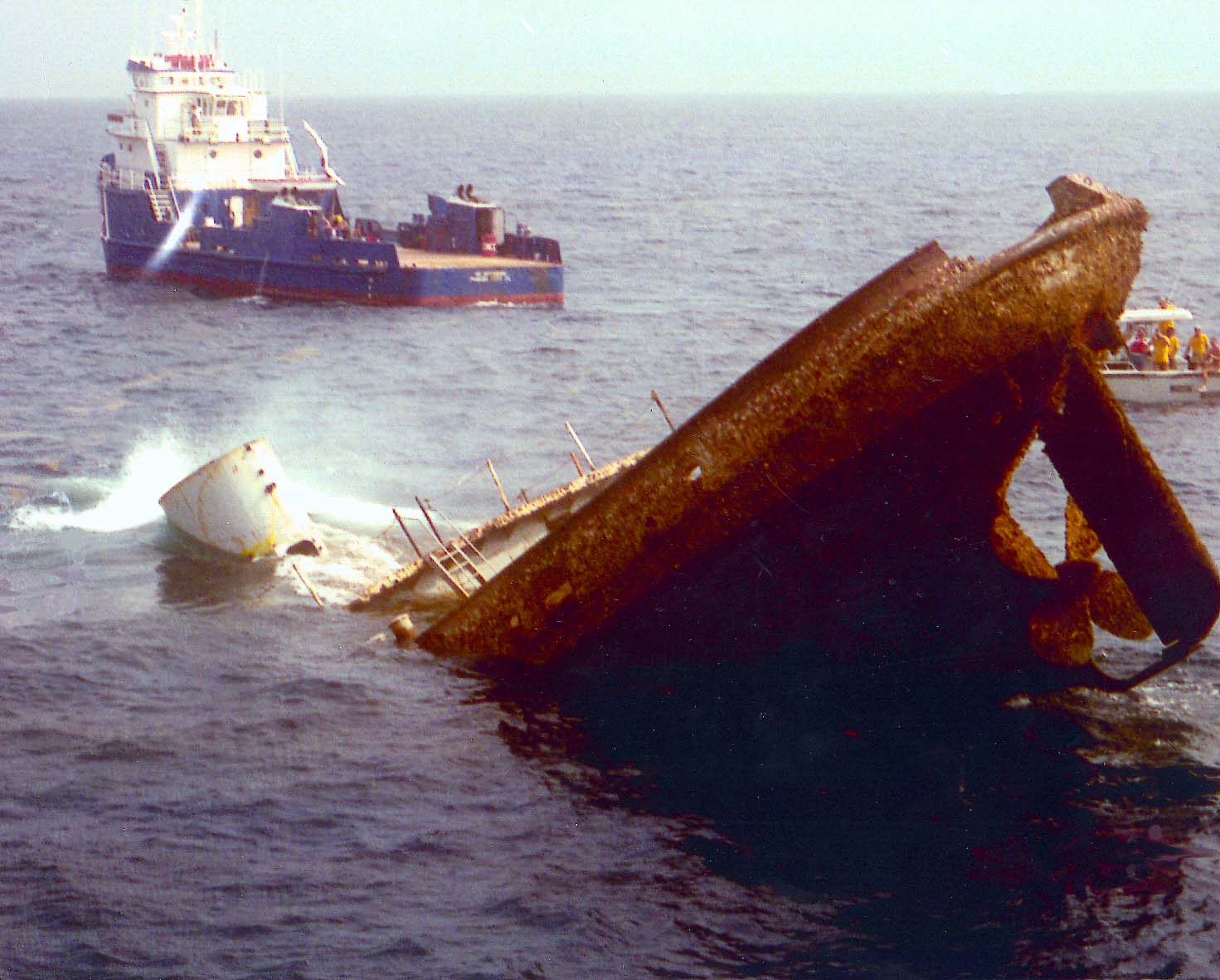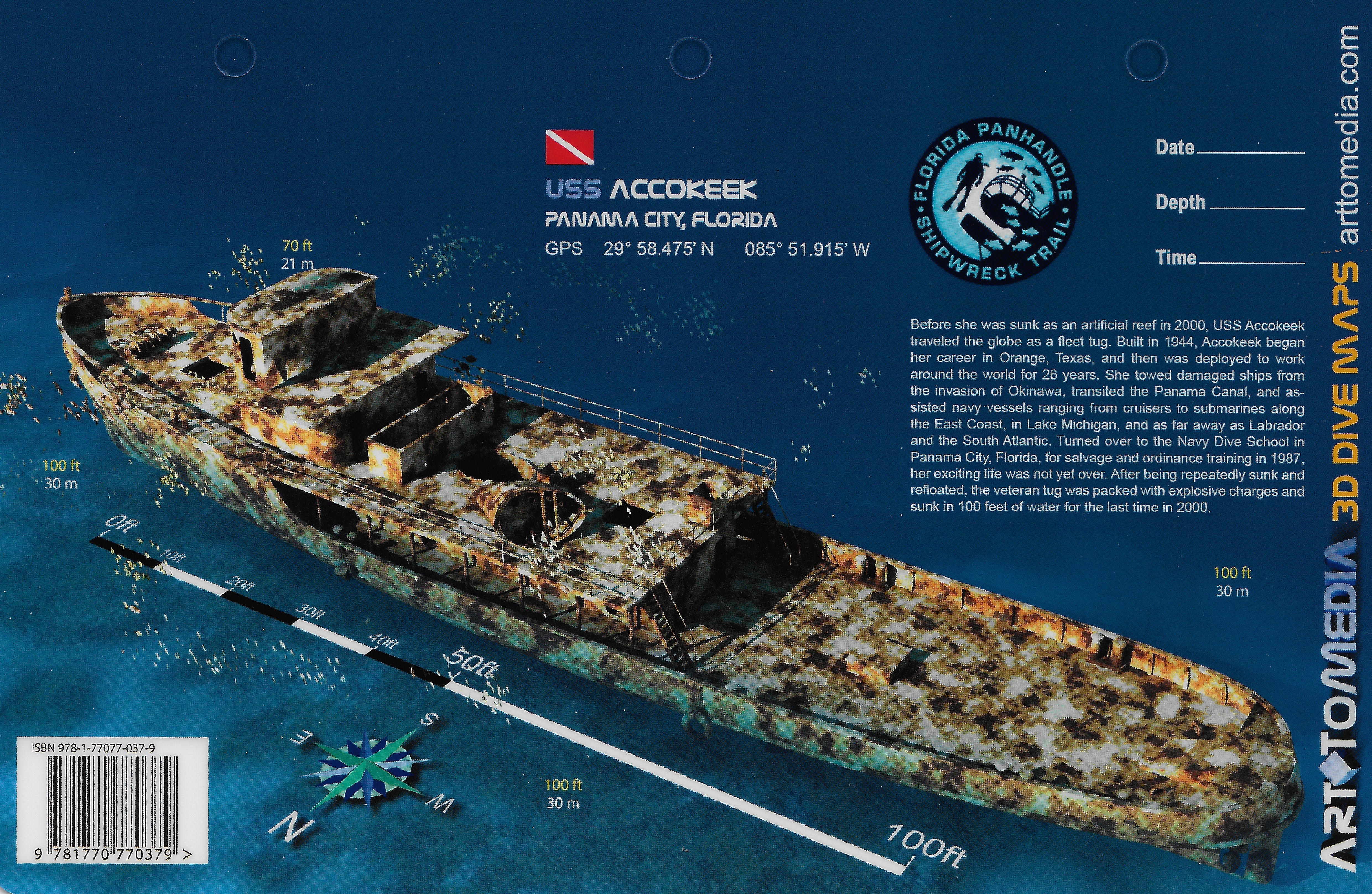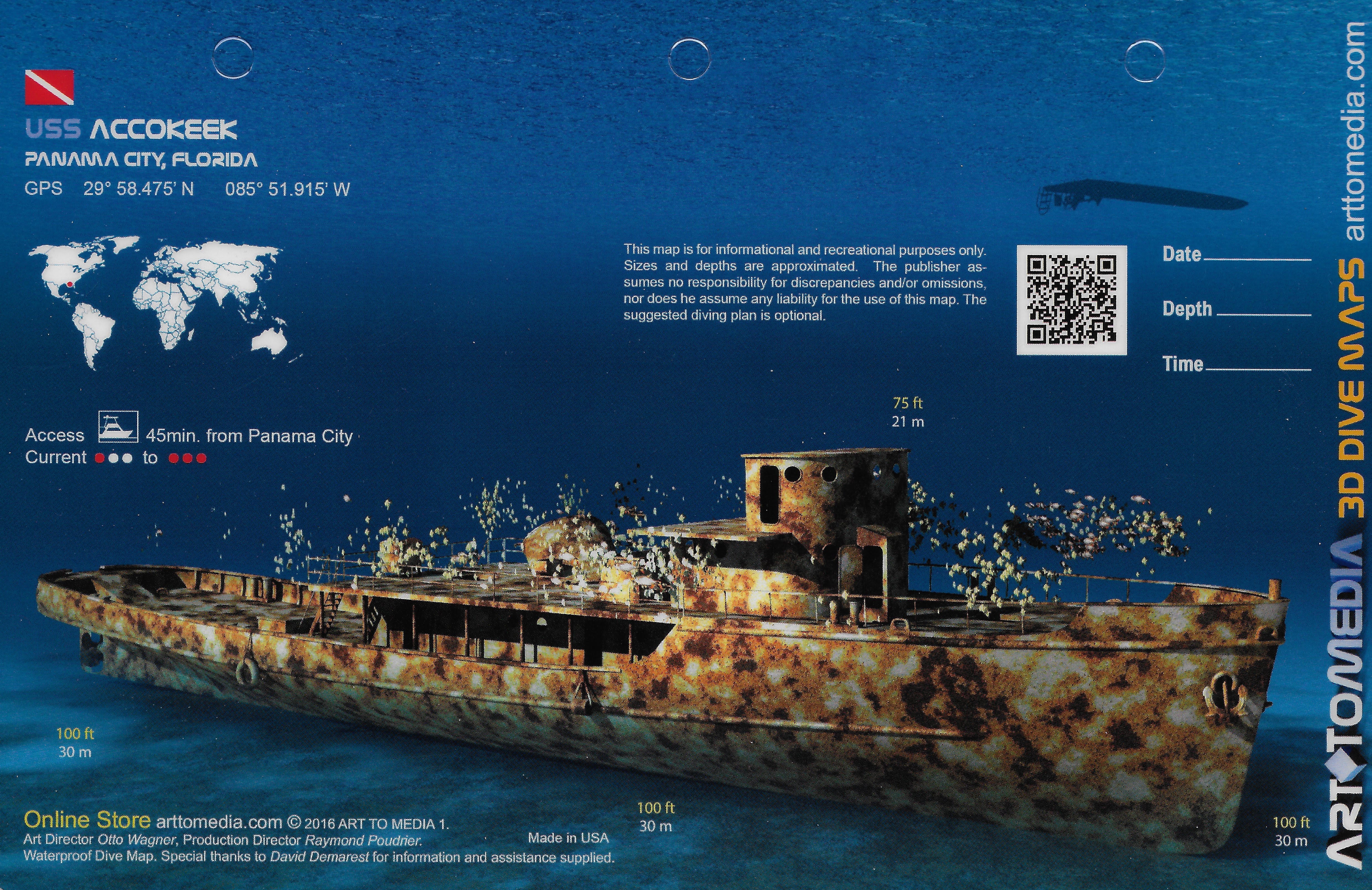Dive The USS Accokeek
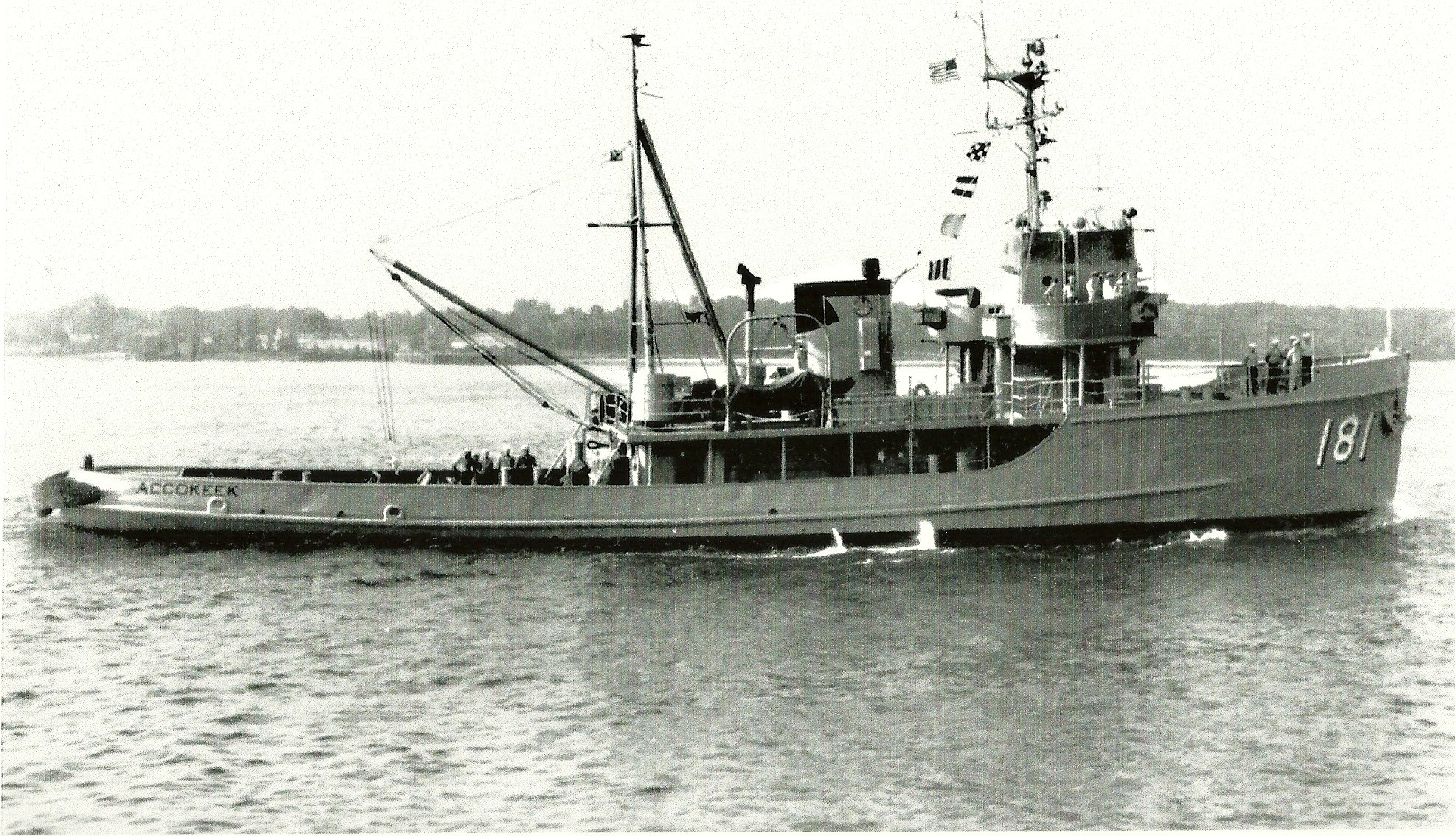
USS Accokeek Dive Video
History Of The USS Accokeek
USS Accokeek traveled the globe as a fleet tug. Built in 1944, Accokeek began her career in Orange, Texas, and then was deployed to work around the world for 26 years.
The Job of The USS Accokeek
She towed damaged ships from the invasion of Okinawa, transited the Panama Canal, and assisted navy vessels ranging from cruisers to submarines along the East Coast, in Lake Michigan, and as far away as Labrador and the South Atlantic.
The Sinking of The USS Accokeek
Turned over to the Navy Dive School in Panama City, Florida, for salvage and ordinance training in 1987, her exciting life was not yet over. After being repeatedly sunk and refloated, the veteran tug was packed with explosive charges and sunk in 100 feet of water for the last time in 2000.
Second Life of The USS Accokeek
From 74′ (bow) to 100′ (to the sand), the Accokeek is an advanced dive. You may want to utilize nitrox for a little more bottom. If you are spearfishng, there is 25′ of vertical profile which will hold amberjack a lot of the time. There are cool port holes to look into, a couple of swim through areas and tons of life on this Panama Vity Beach shipwreck.
Date of Sinking: July 9, 2000
Depth
Length
Beam
Distance
Accokeek Coordinates:
29° 58.475’ N – 085° 51.915’ W
Early History of The Accokeek:
The auxiliary ocean tug ATA-181 was laid down on 15 June 1944 at Orange, Texas, by the Levingston Shipbuilding Company. The tug was launched on 27 July 1944 and commissioned on 7 October 1944 with LT. C.M. Lacour in command.
After shakedown, she sailed for the Pacific, transiting the Panama Canal early in 1945 and stopping in Hawaii in March. Resuming her voyage west the tug arrived at Guam on 25 March, a week before the assault on Okinawa. For the rest of the war, ATA-181 aided warships damaged in that campaign, towing them from the combat area into Kerama Retto and then to bases in the Marianas and the Western Carolinas.
She stayed in the far east after he war providing towing and salvage support for the American occupation forces. On 15 October a severe typhoon struck the anchorage at Okinawa and drove the ATA-181 aground: but the tug escaped heavy damage and soon returned to duty. Her far eastern assignment ended early in the summer of 1946, and she began the long voyage to the east coast of the United States. Steaming via Pearl Harbor, San Francisco and the Panama Canal, ATA-181 reached Philadelphia on 20 November. JATA-181 earned one Battle Star in World War II.
Over the next 26 years, she carried out a variety of missions for the Atlantic Fleet. On 16 July 1948 she became ACCOKEEK. While she operated most along the eastern seaboard and in the West Indies, her work also took her to such widely separated locations as Labrador, Ascension Island, and even inland to Lake Michigan. Philadelphia served as her homeport throughout most of her post war career, but that changed on 30 June 1969 when ACCOKEEK was reassigned to Little Creek VA. The tug operated from that base for the remaining three years of her Naval service. Decommissioned at Norfolk on 29 June 1972, ACCOKEEK was transferred to the Maritime Administration on 19 September 1972 for lay-up in the National Defense Reserve Fleet (NDRF). In 1987 she was transferred to the Naval Diving and Salvage Training Center to be used as a training Platform for Salvage Operations. After environmental cleaning she served this mission until the summer of 2000. At that time, CMDR. Mark Helmkamp, Commanding Officer of the Naval Diving and Salvage Training Center secured a replacement training hull and turned the ACCOKEEK over to the local artificial reef program in Panama City, Florida.
In a joint venture with Danny Grizzard, President of a local non-profit research group (Florida Aquatic & Marine) the permits were secured and on July 9, 2000 the ACCOKEEK was laid to rest in approximately 100’ of water offshore of Panama City. As a valuable donation to the local community the ACCOKEEK is expected to serve as support to the local marine environment for the next 100 years.
NOTE: For more information see www.gulfreefs.org

